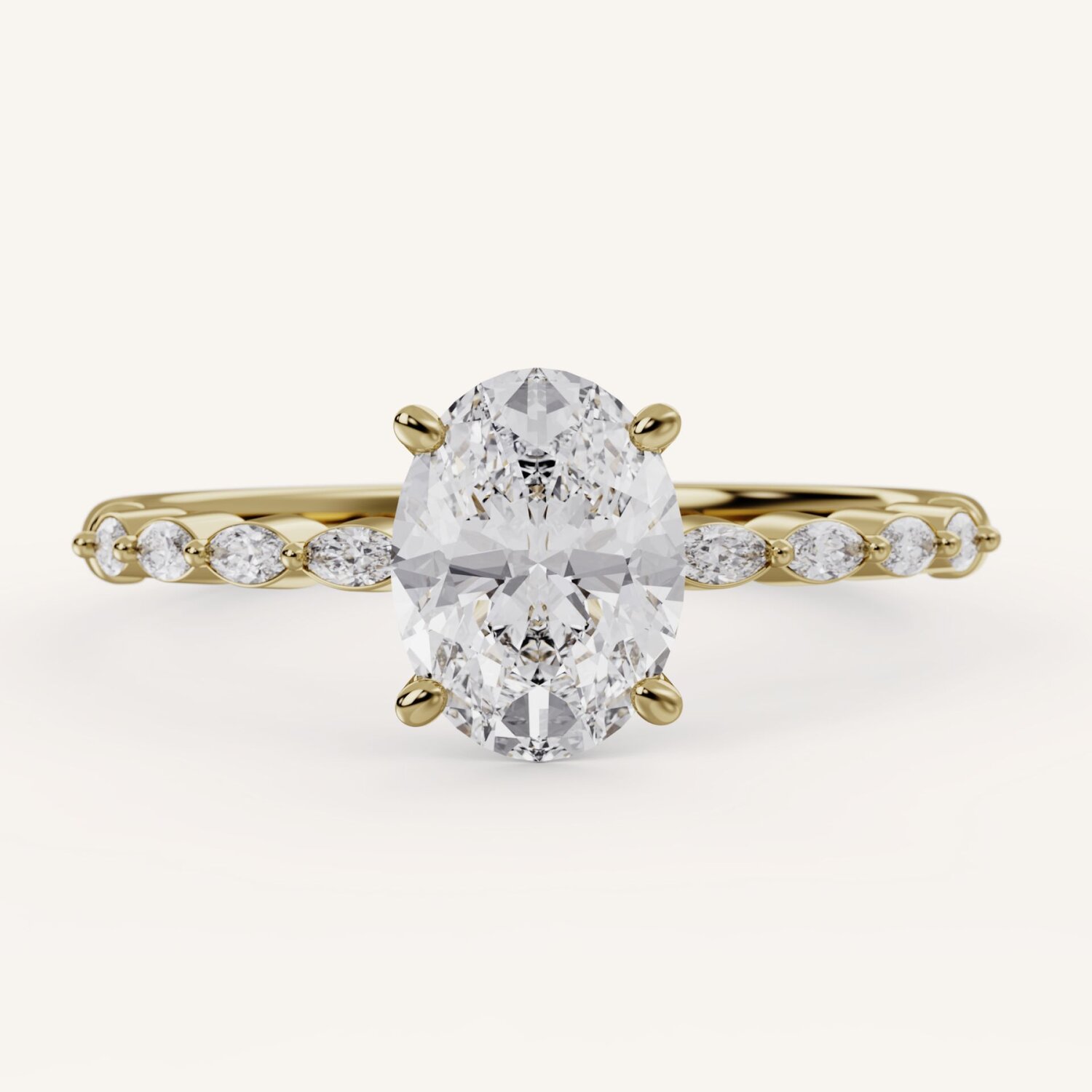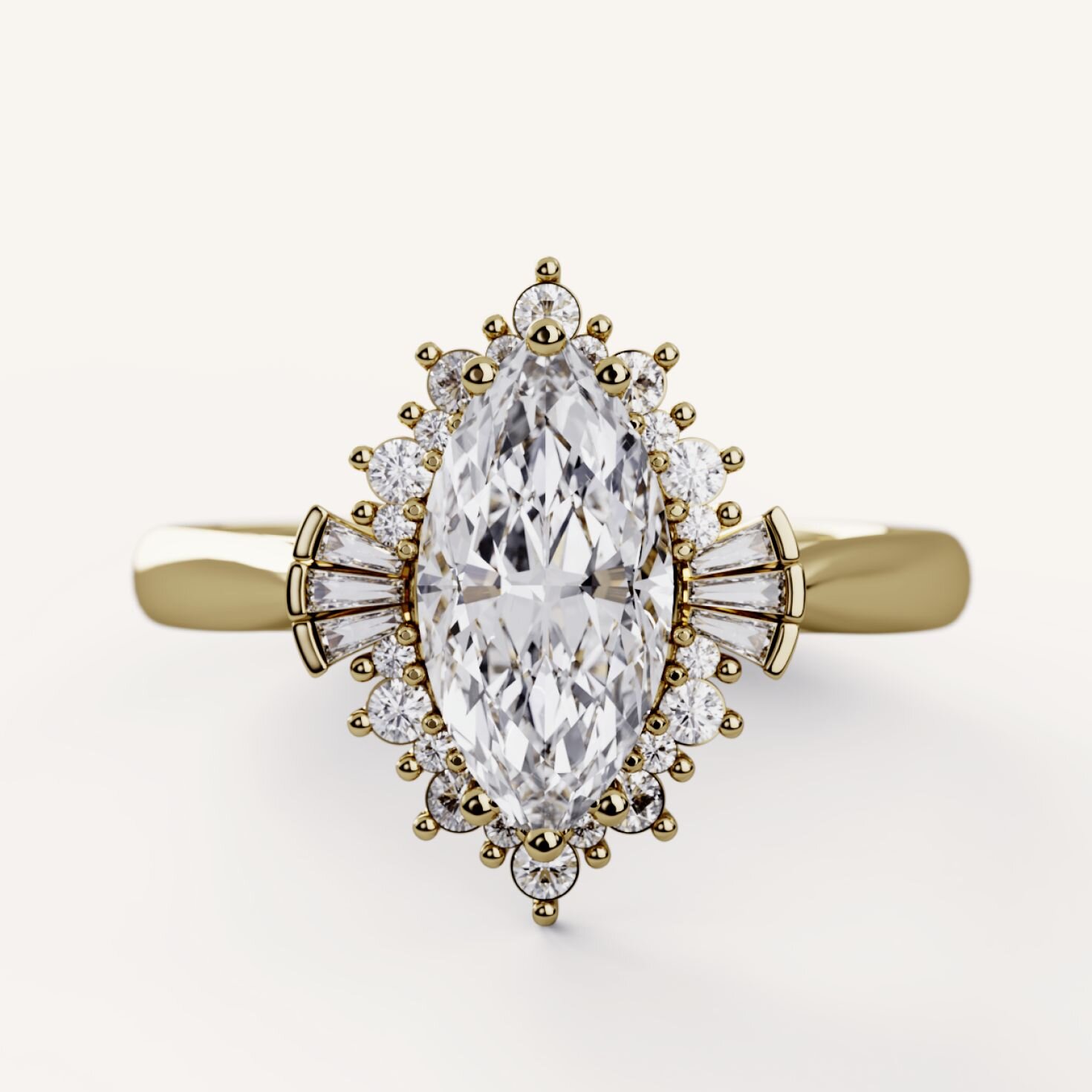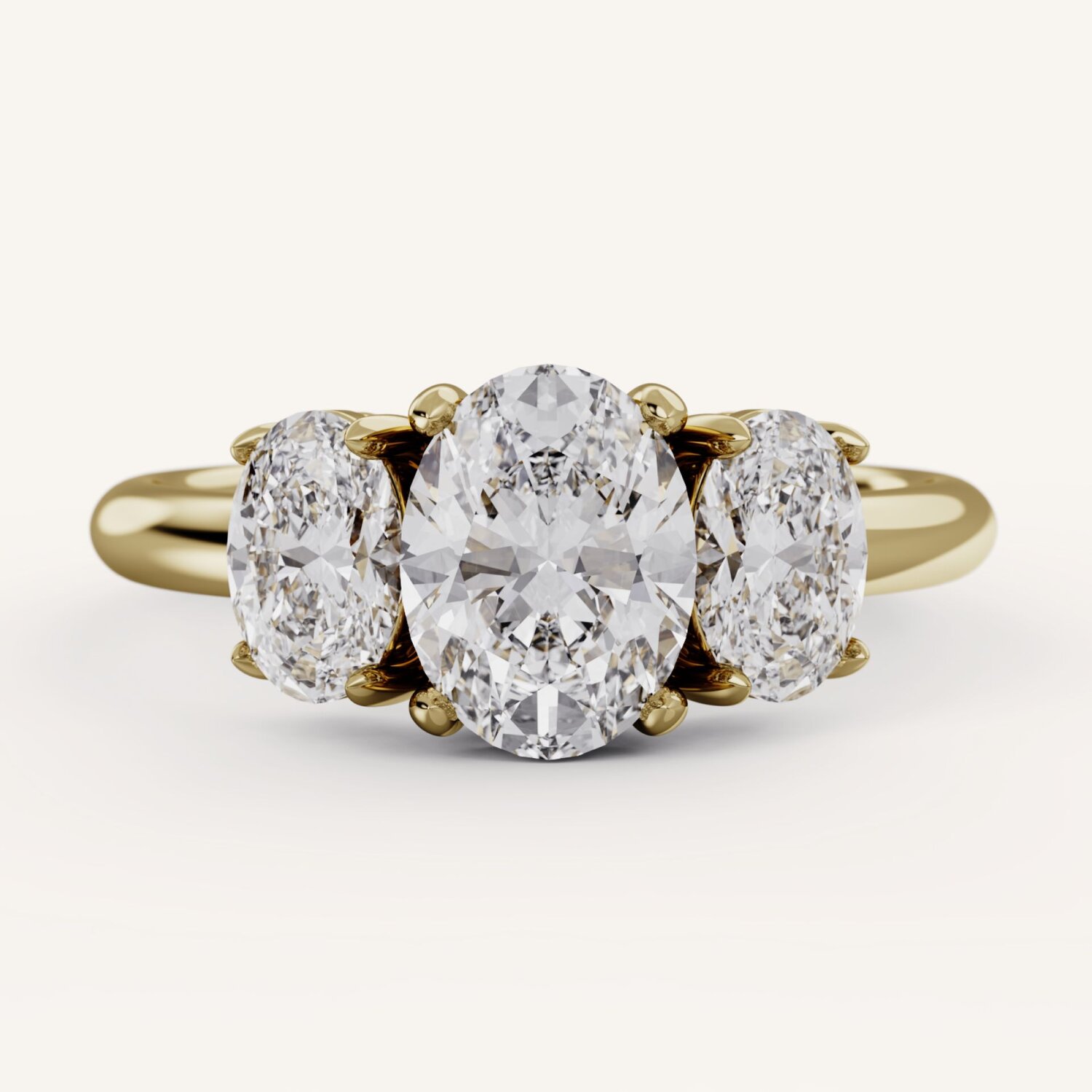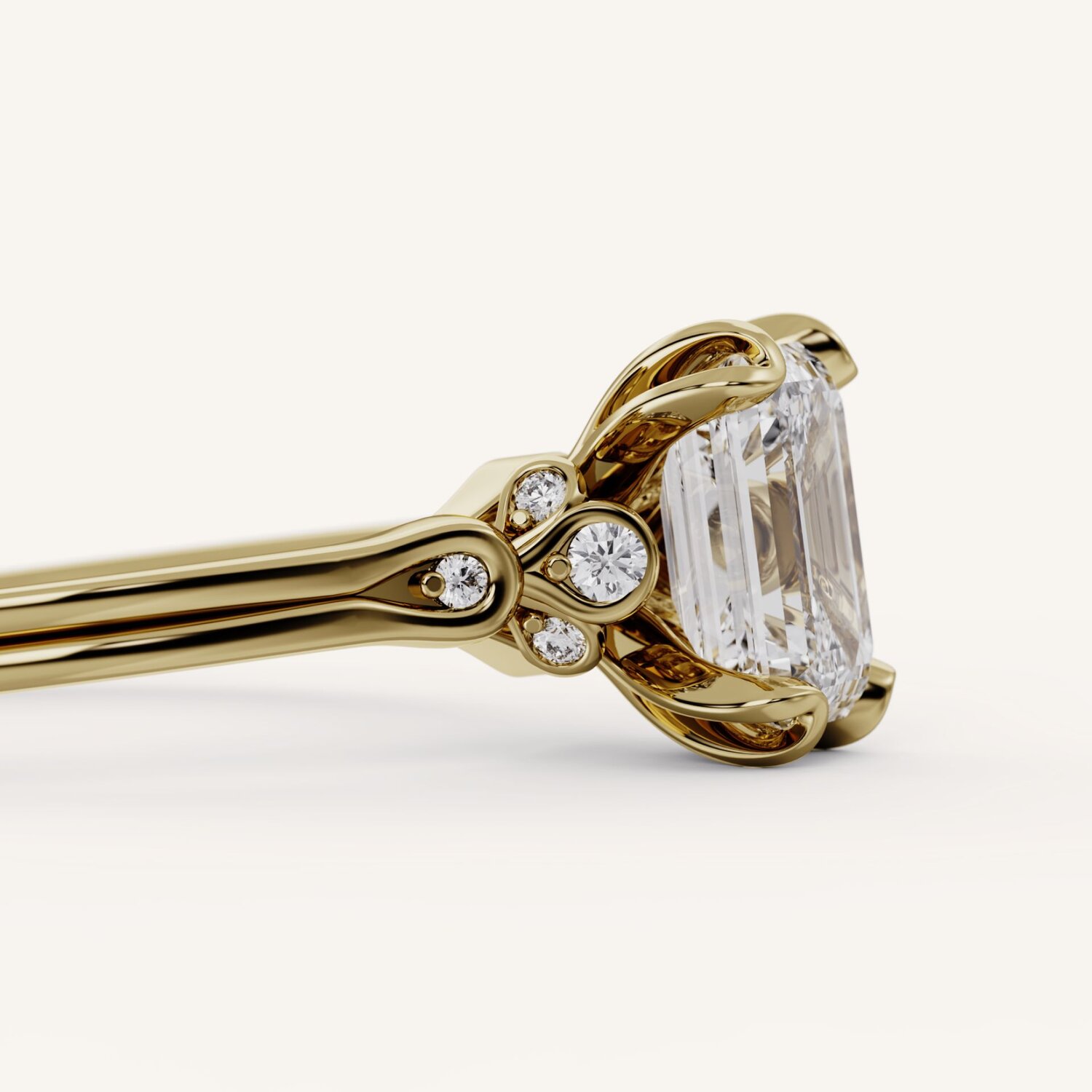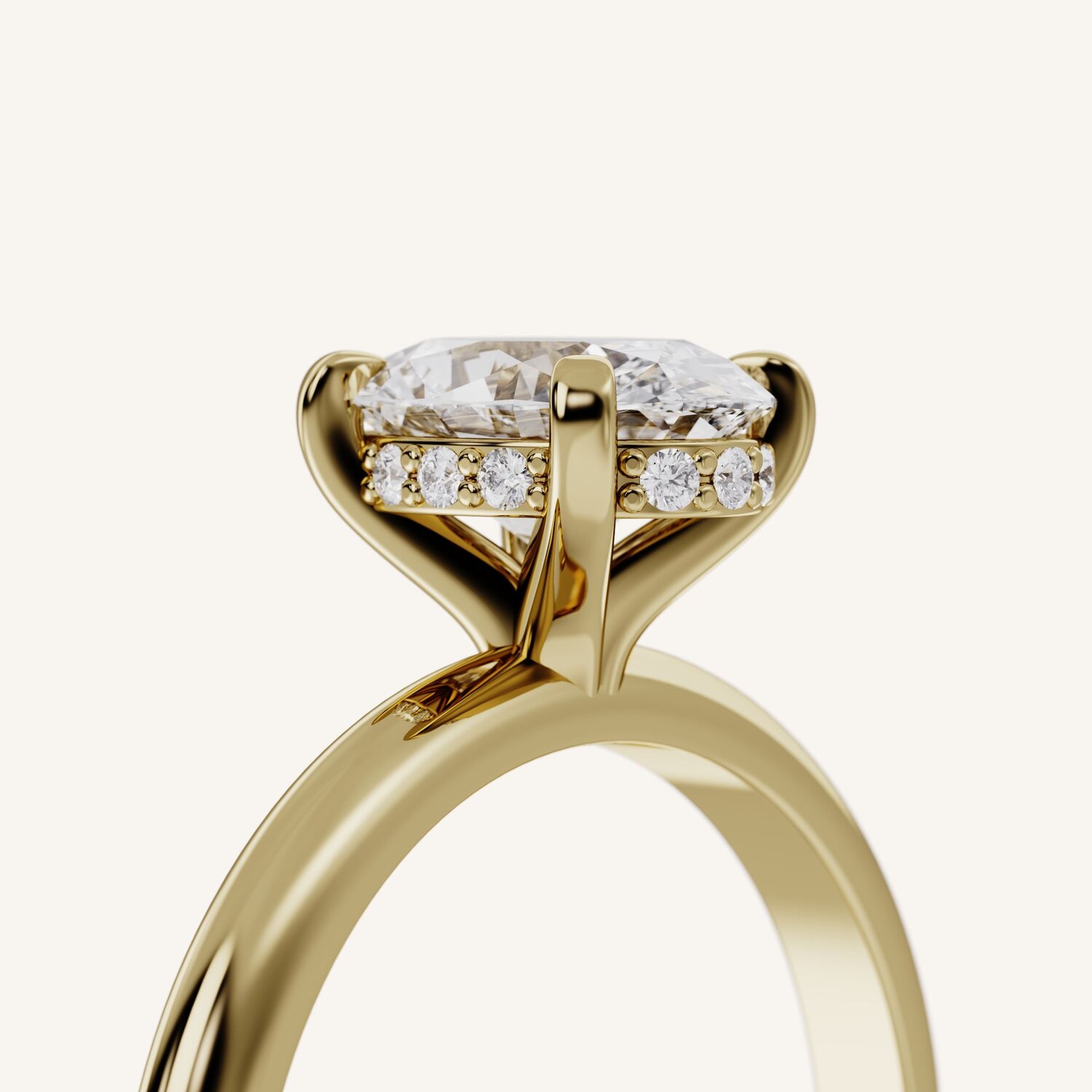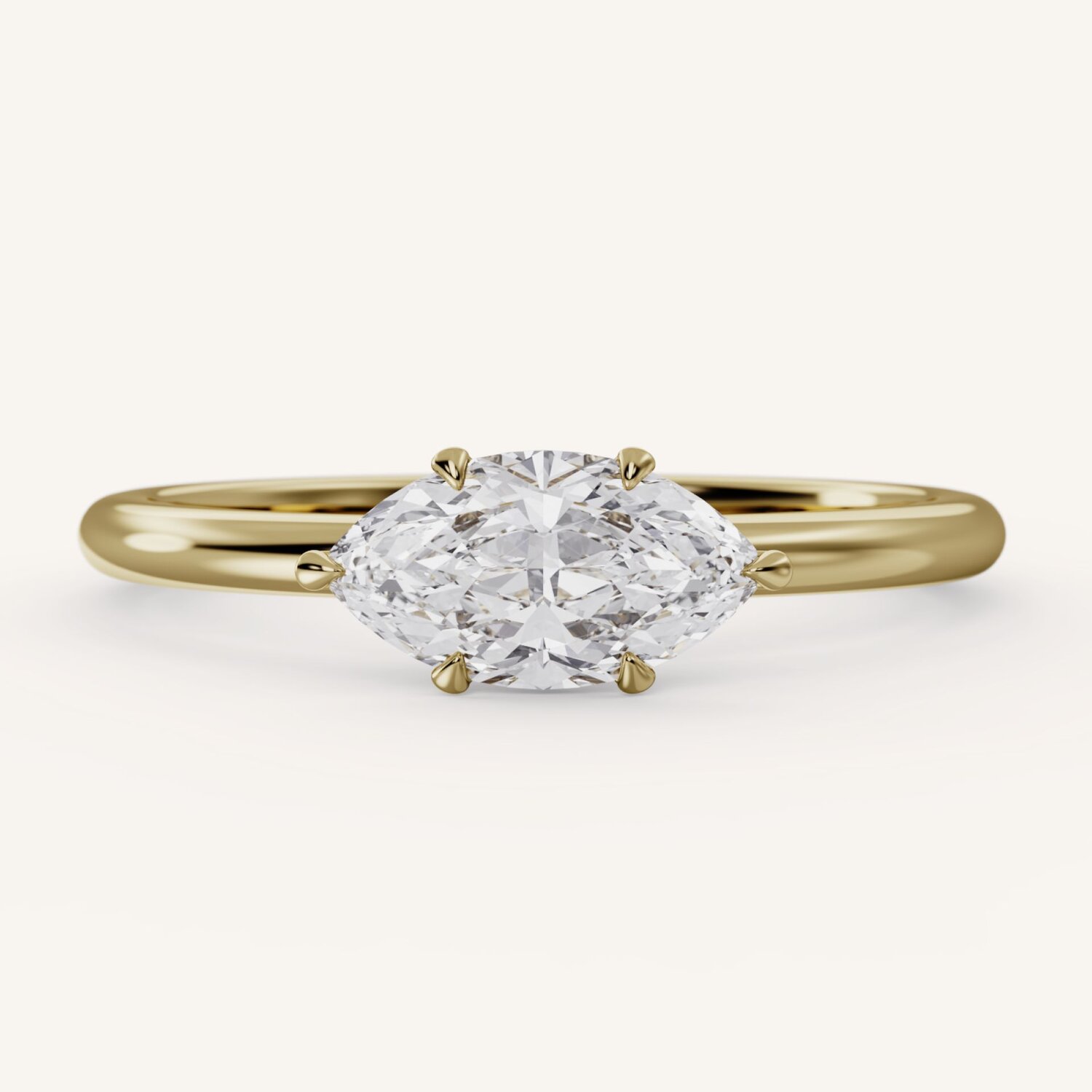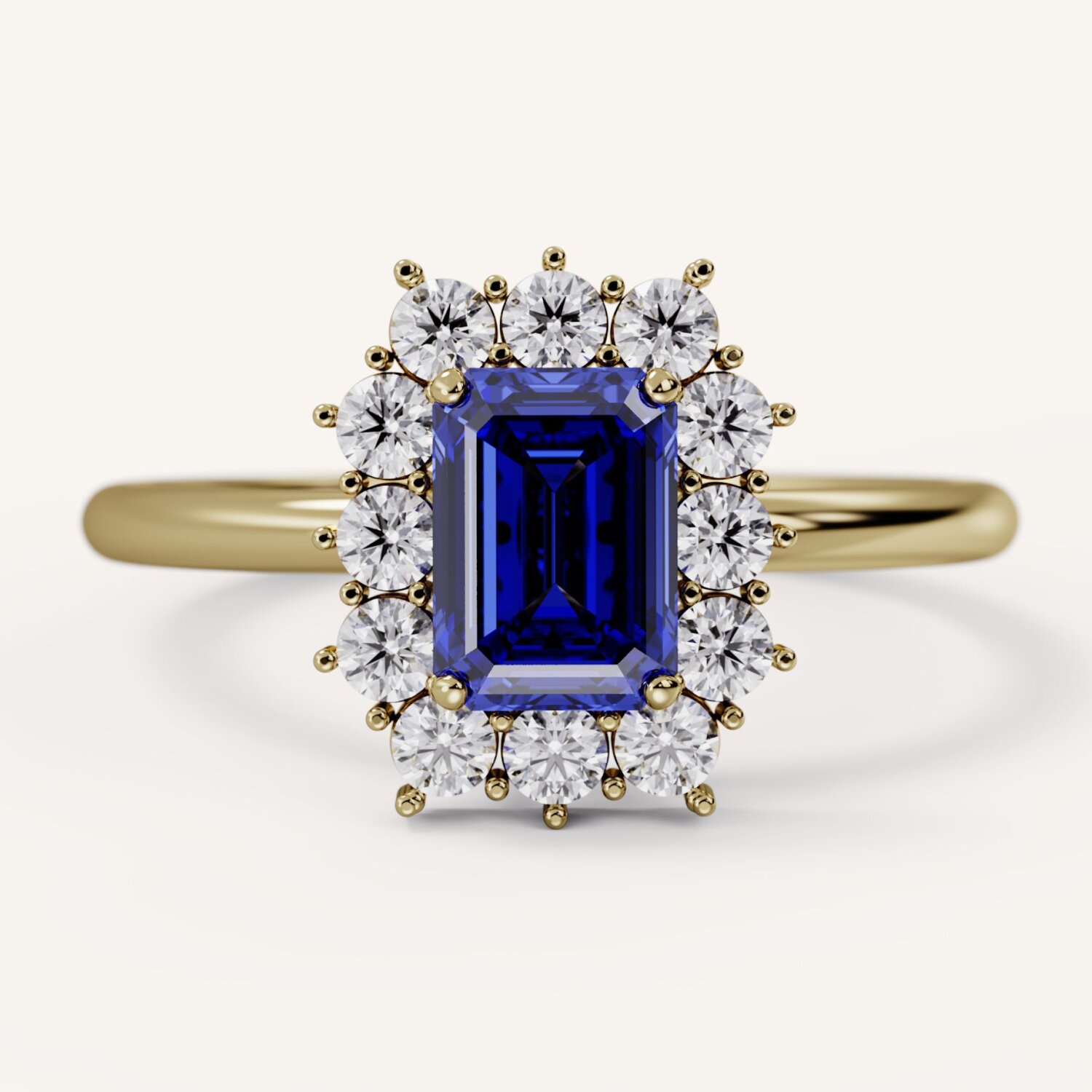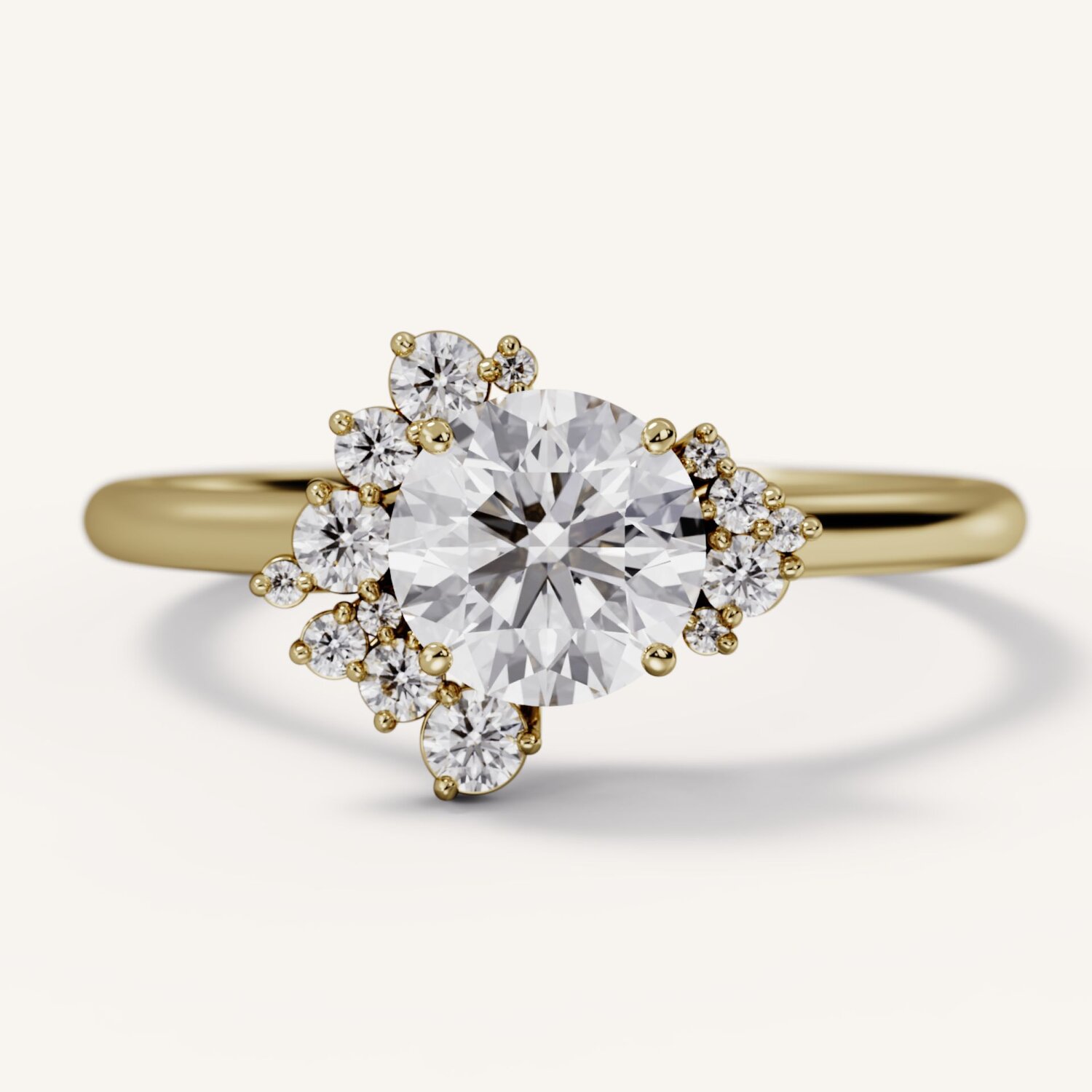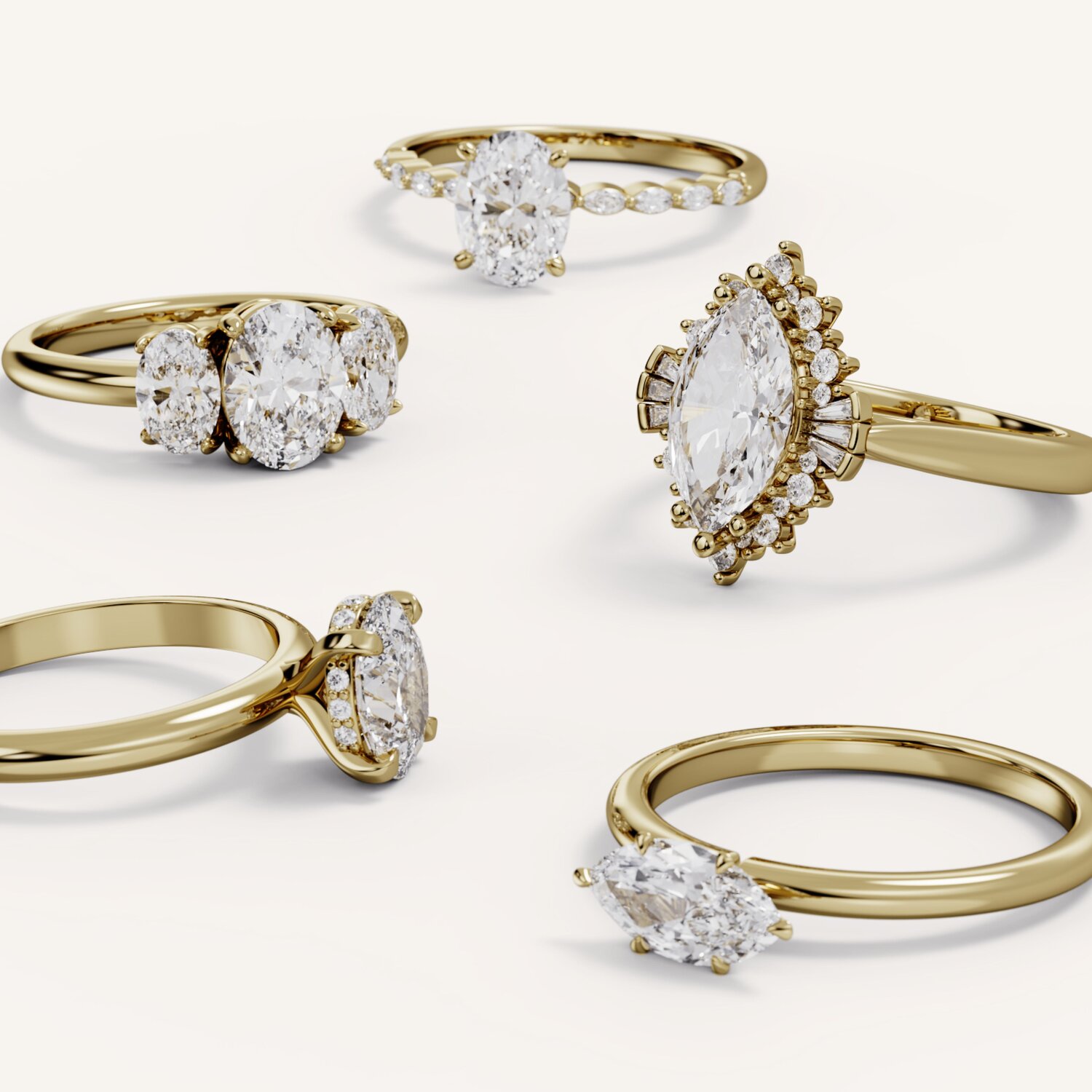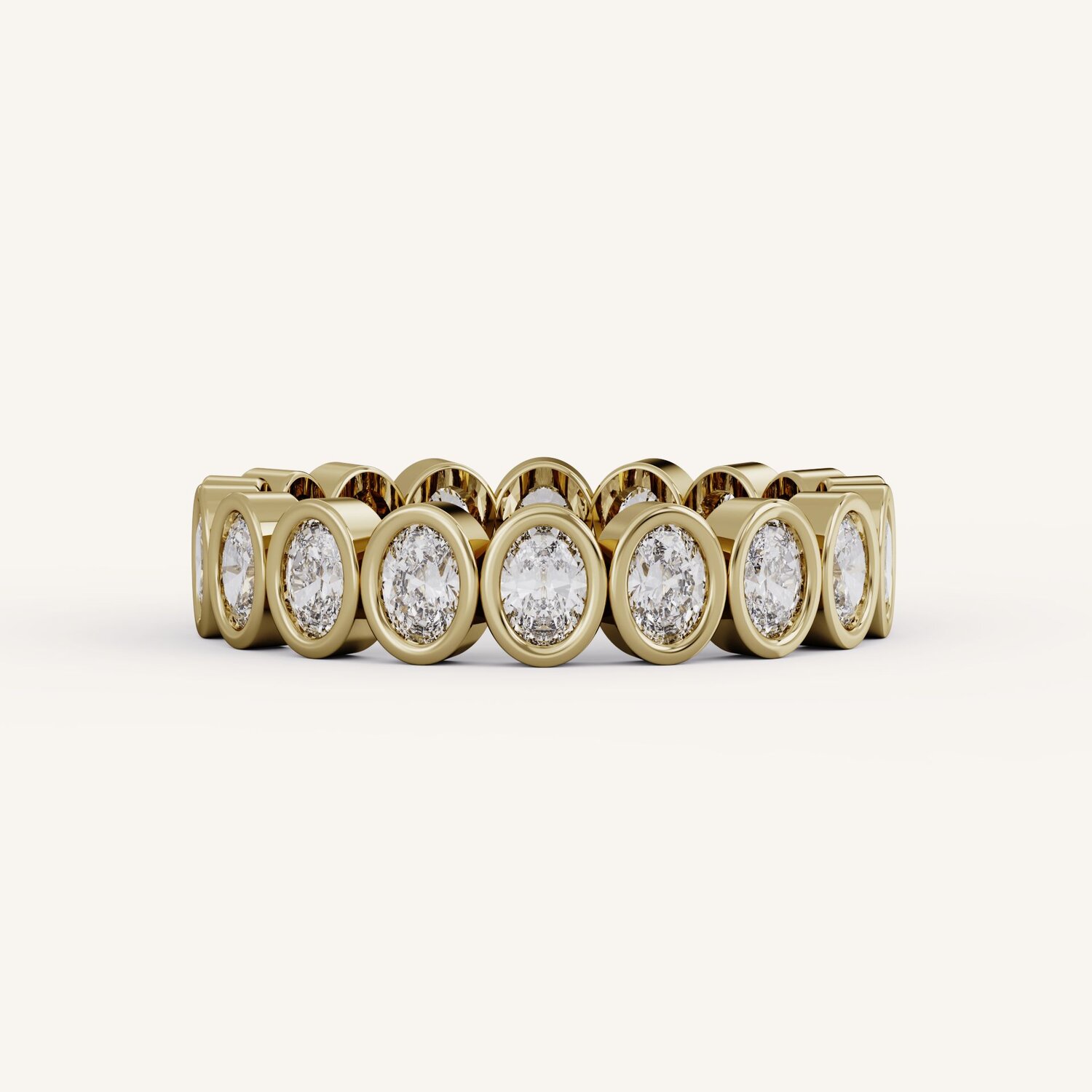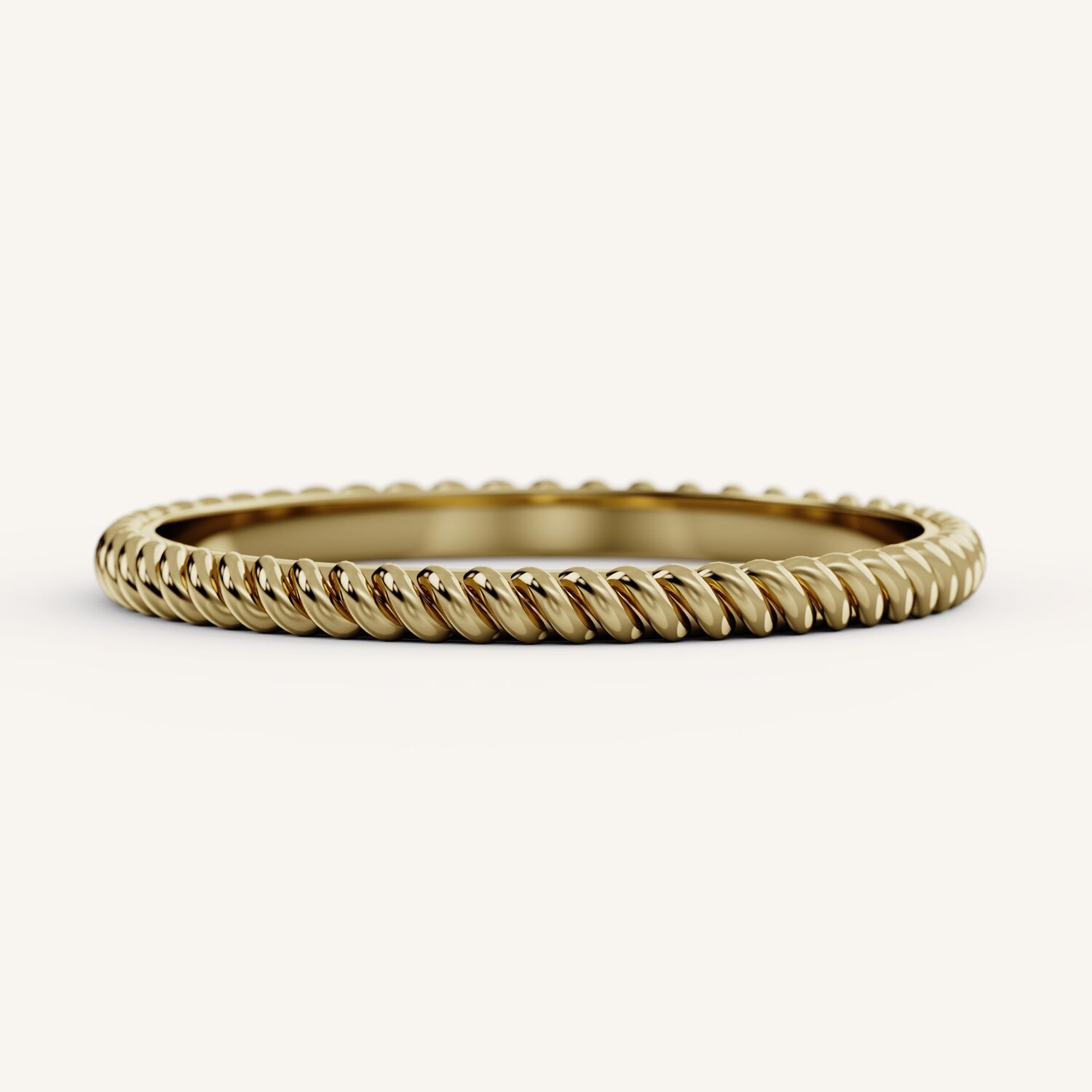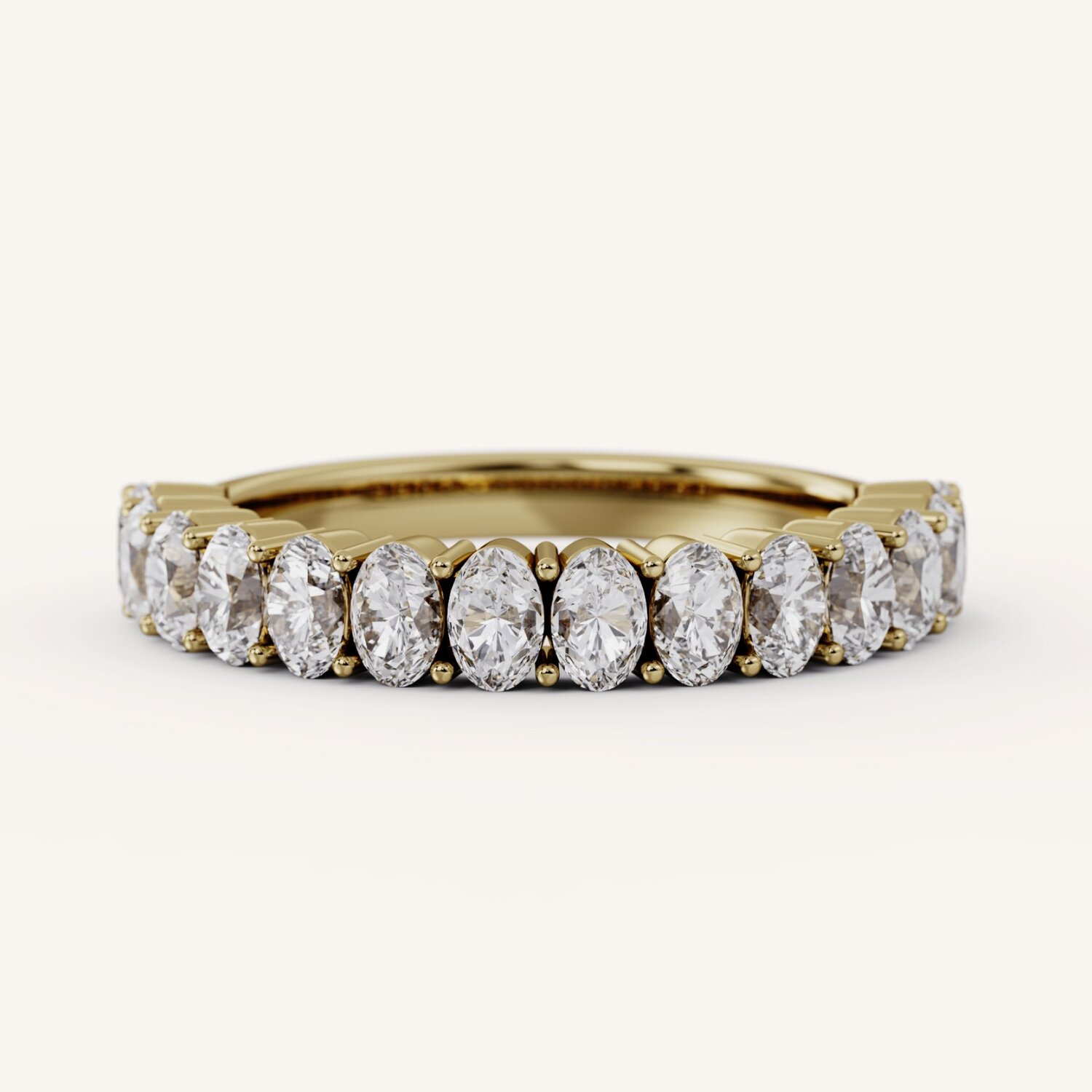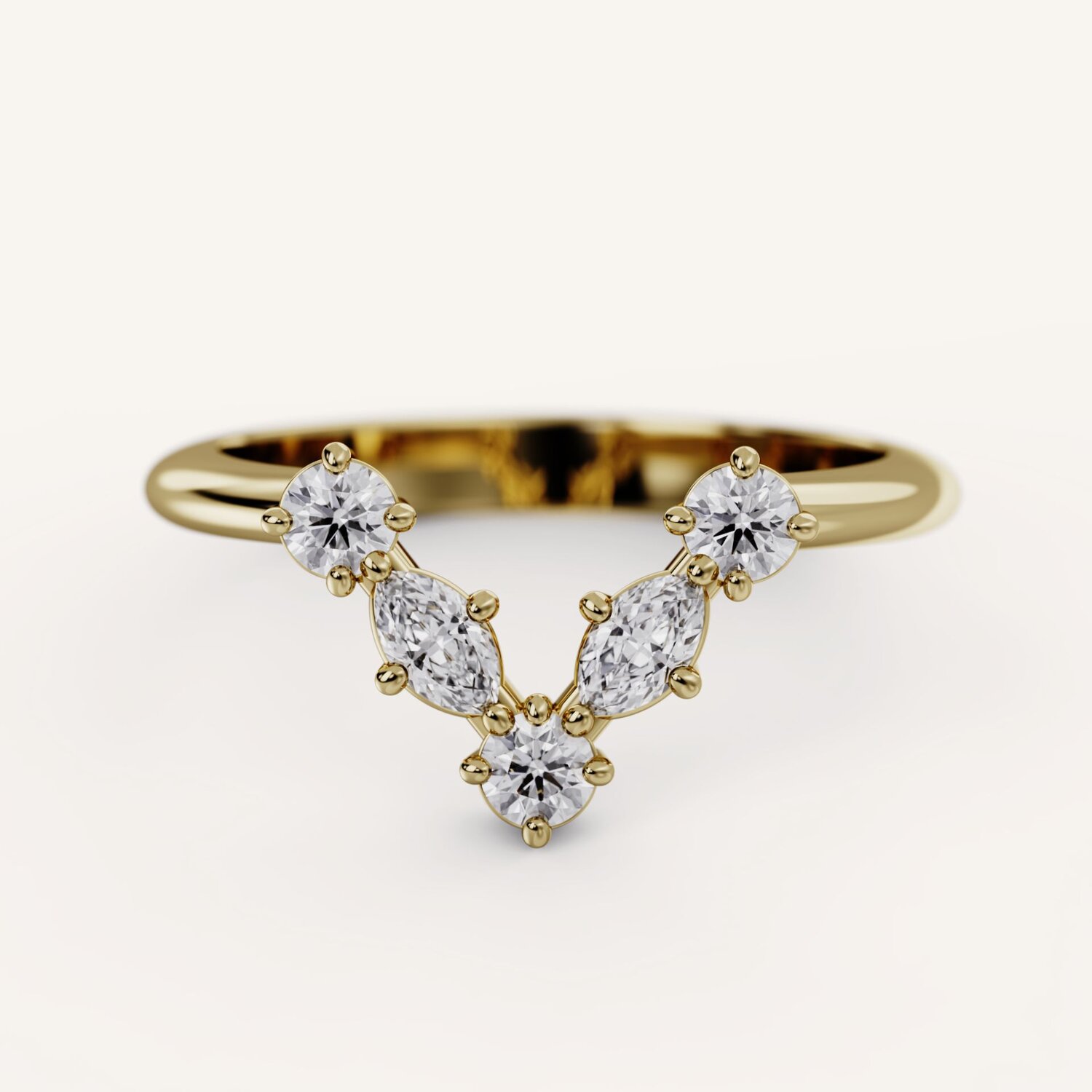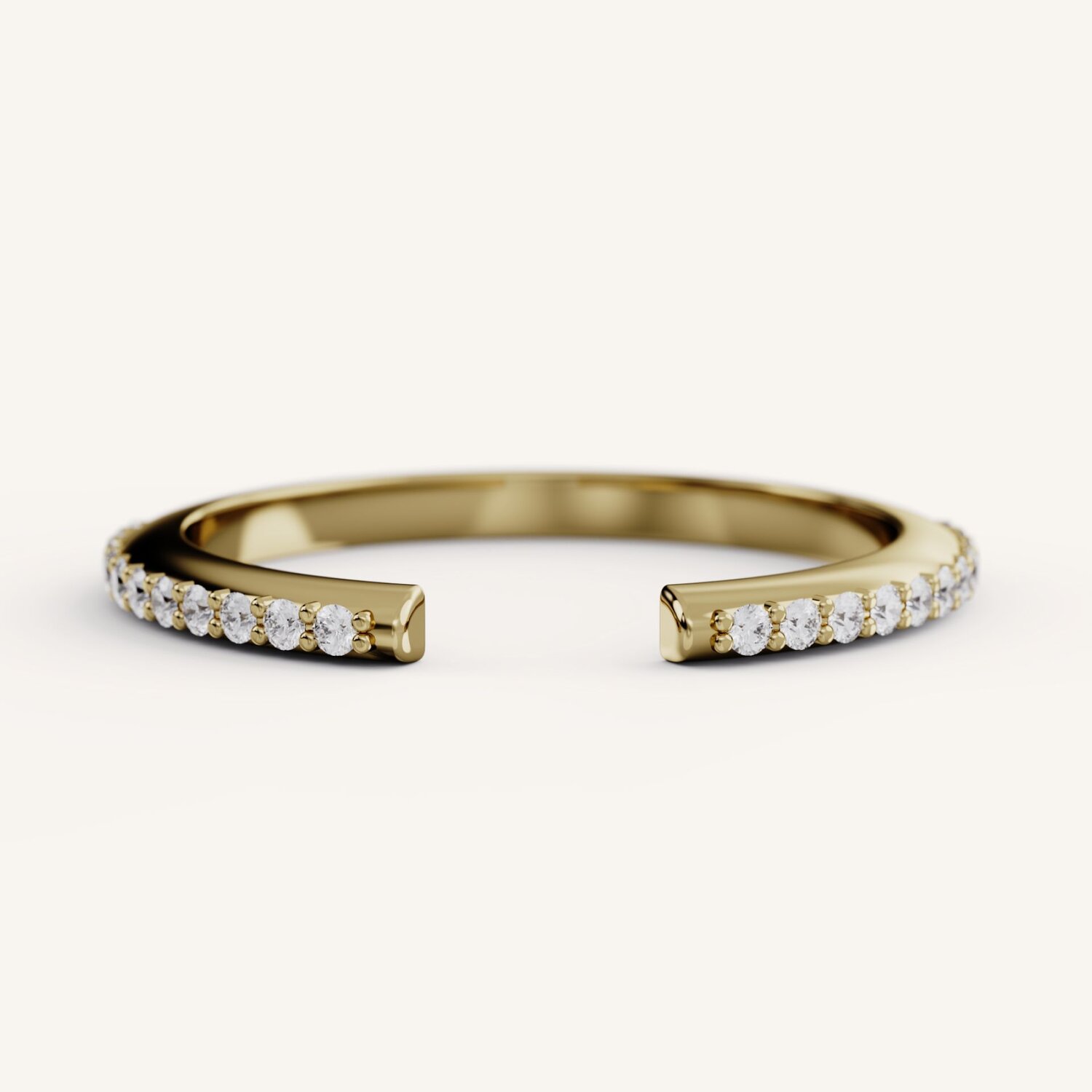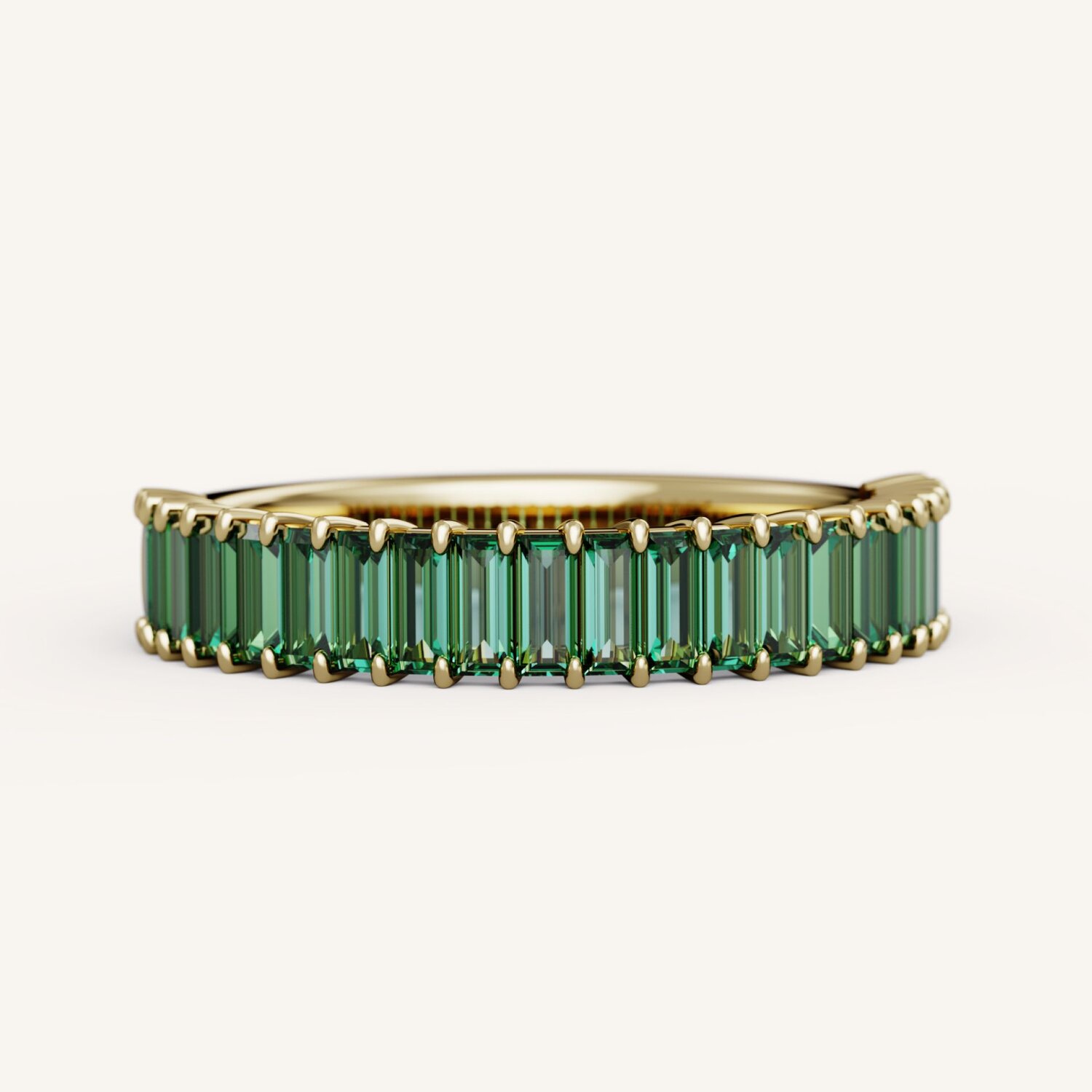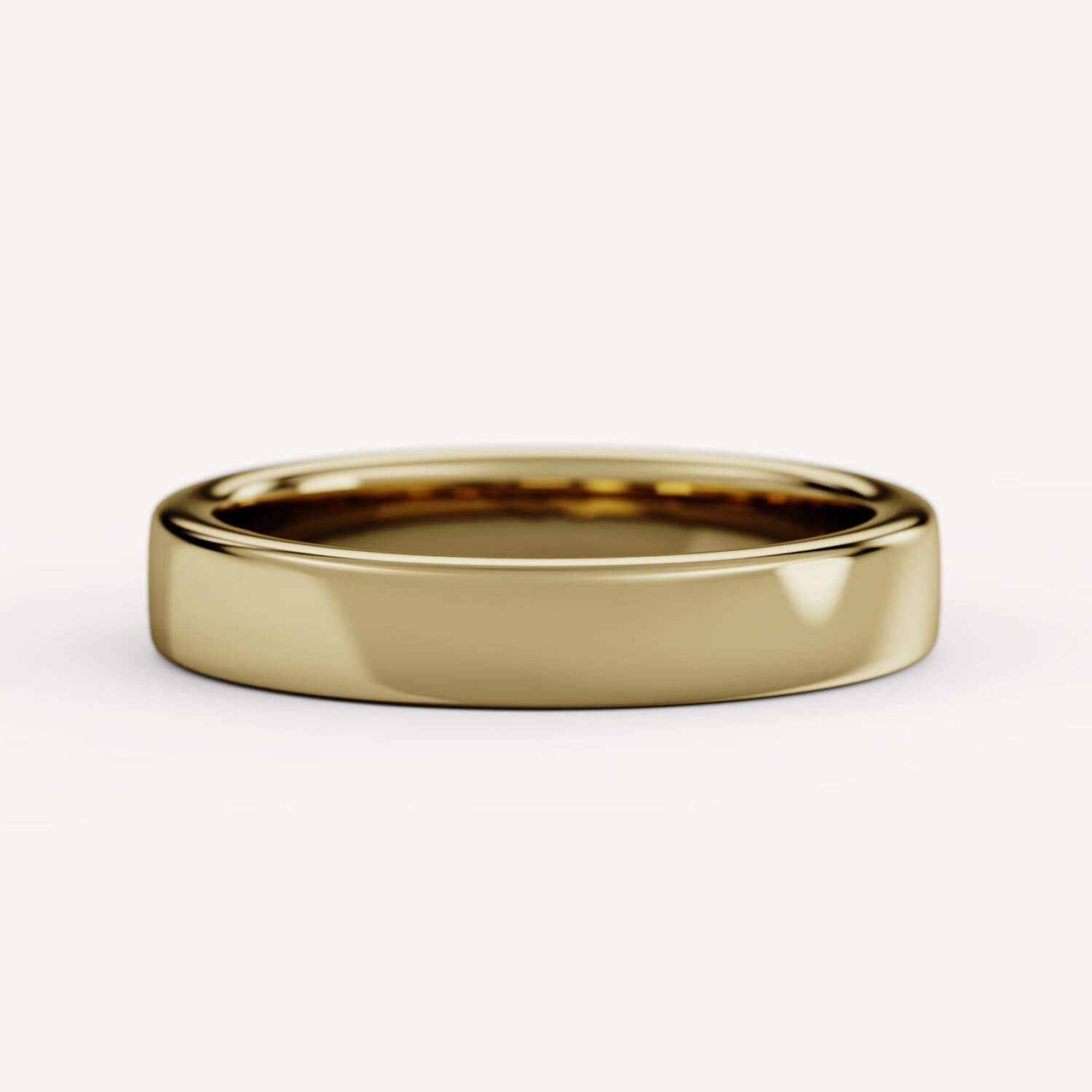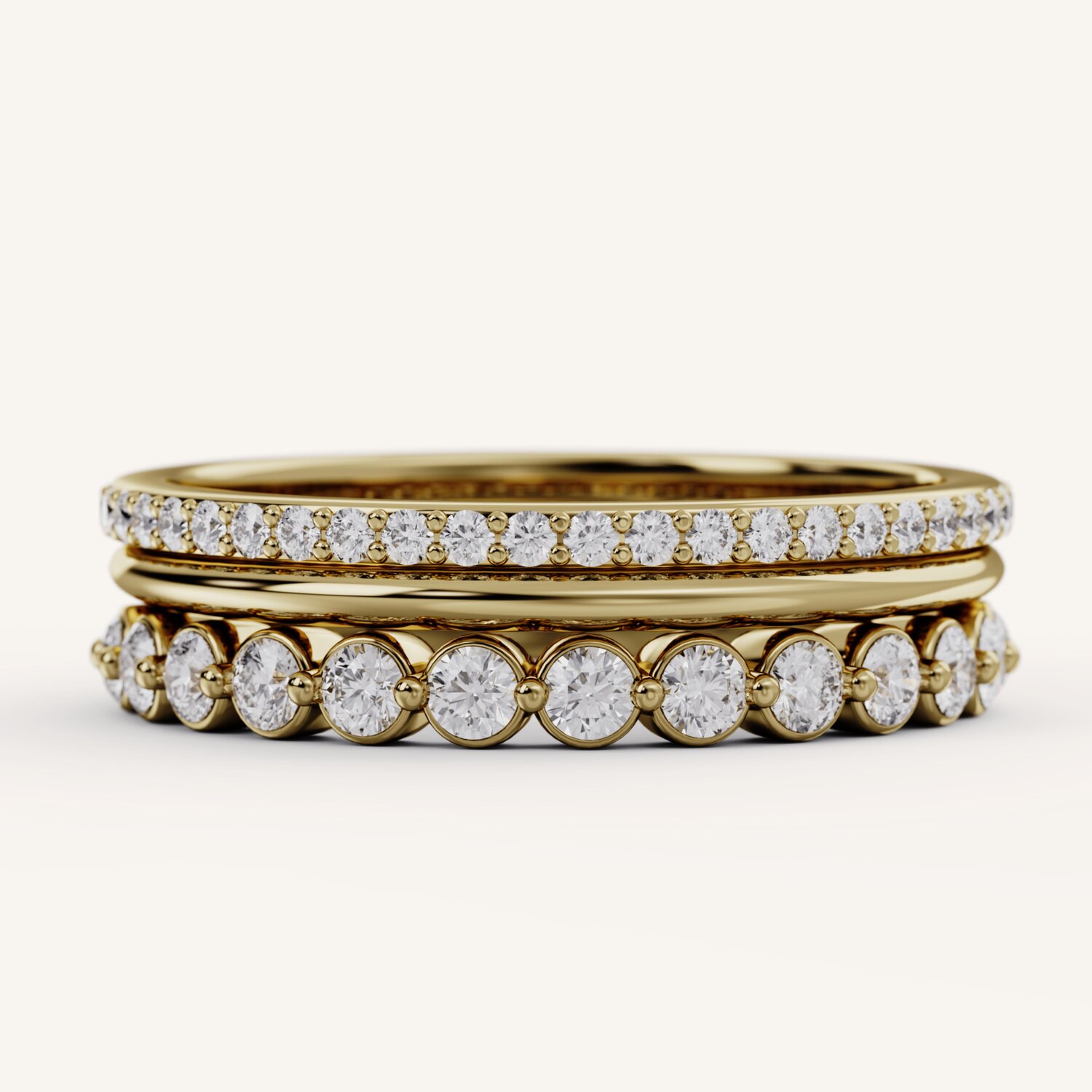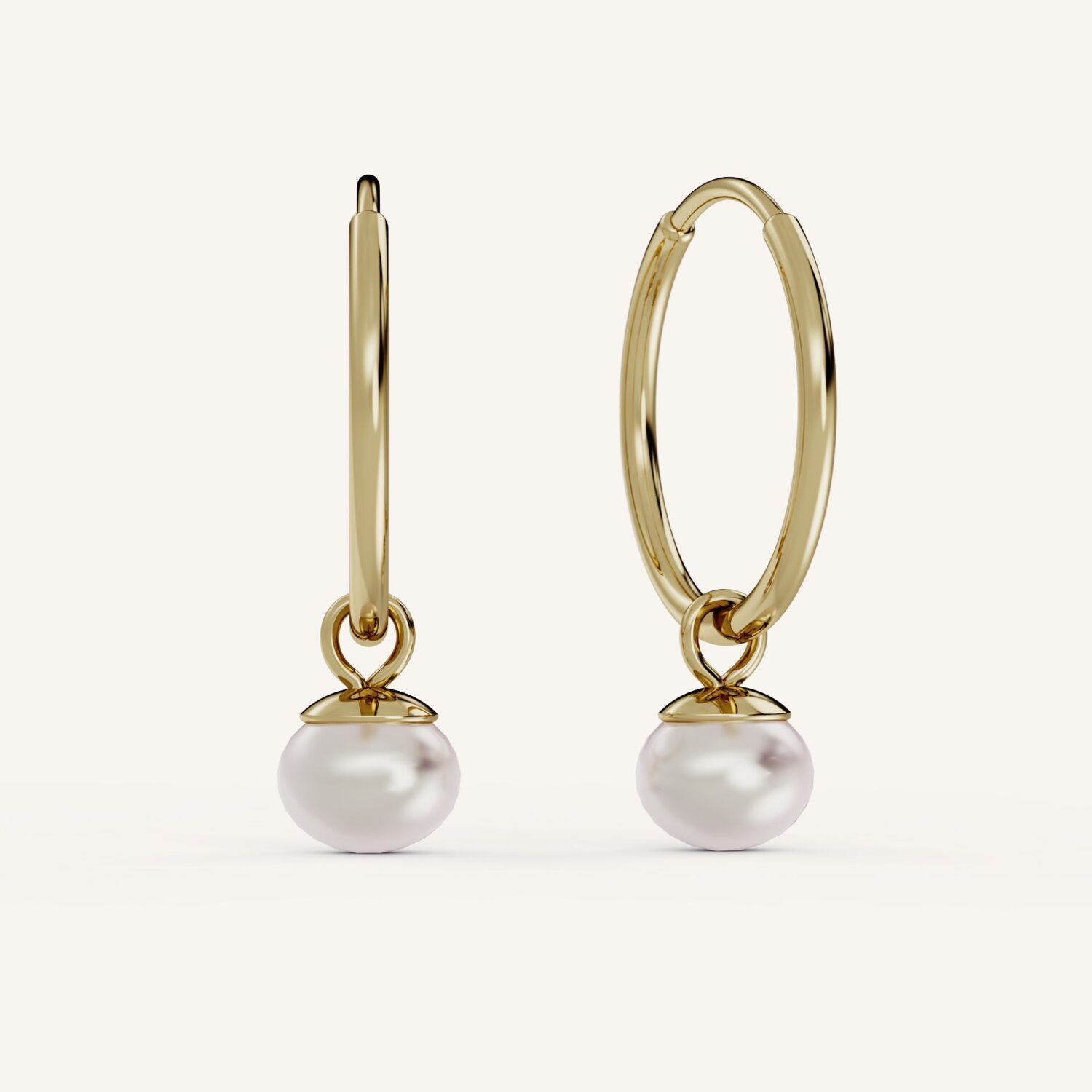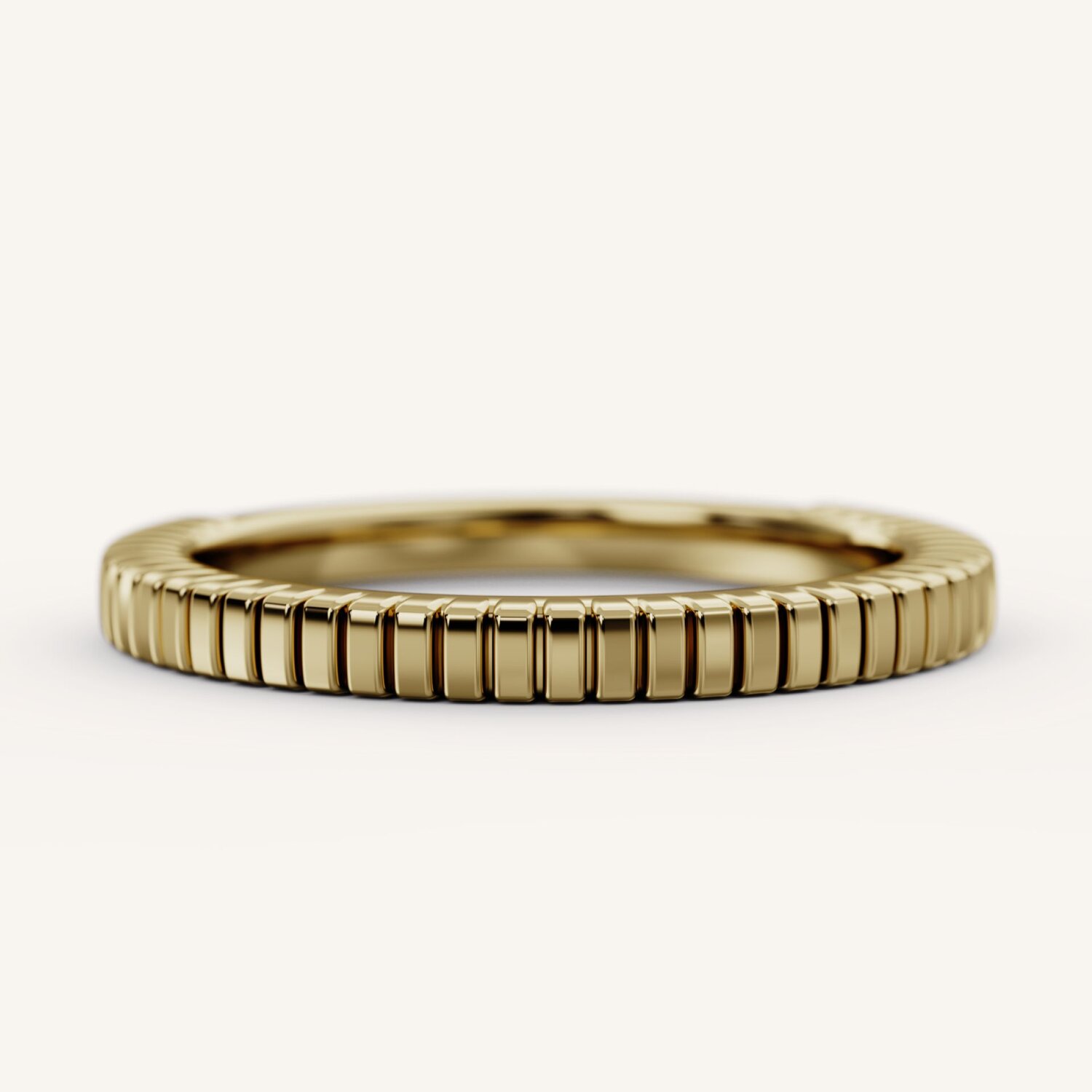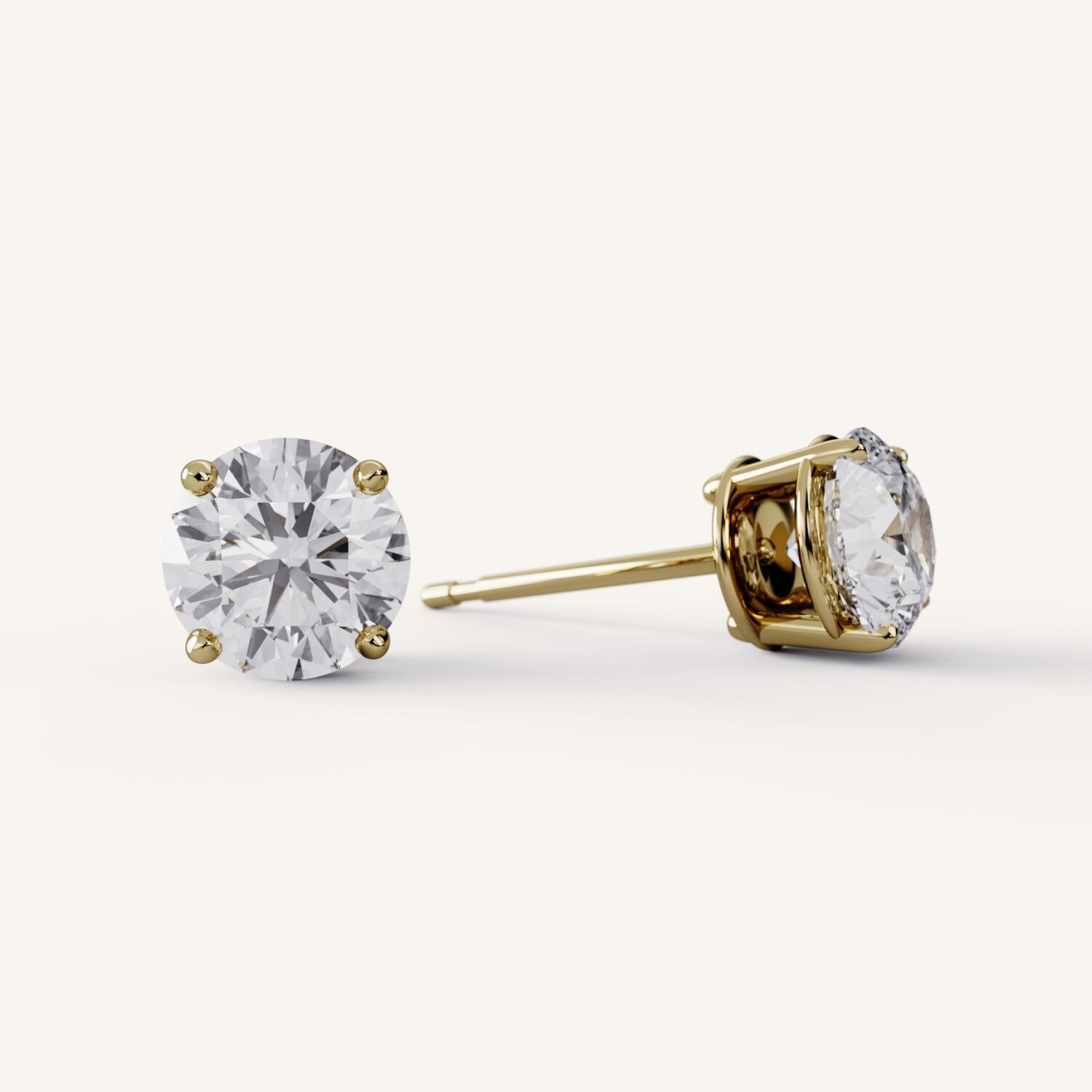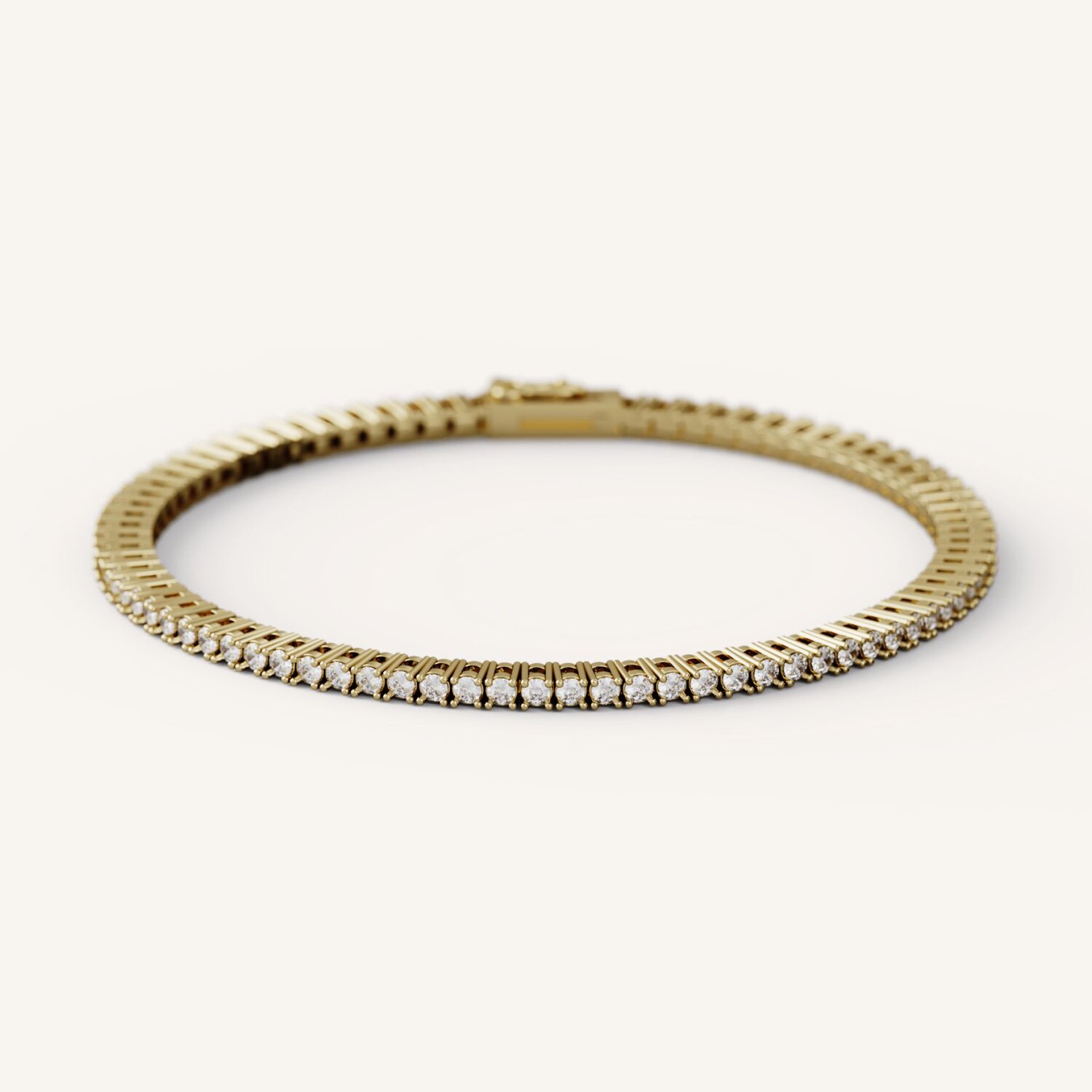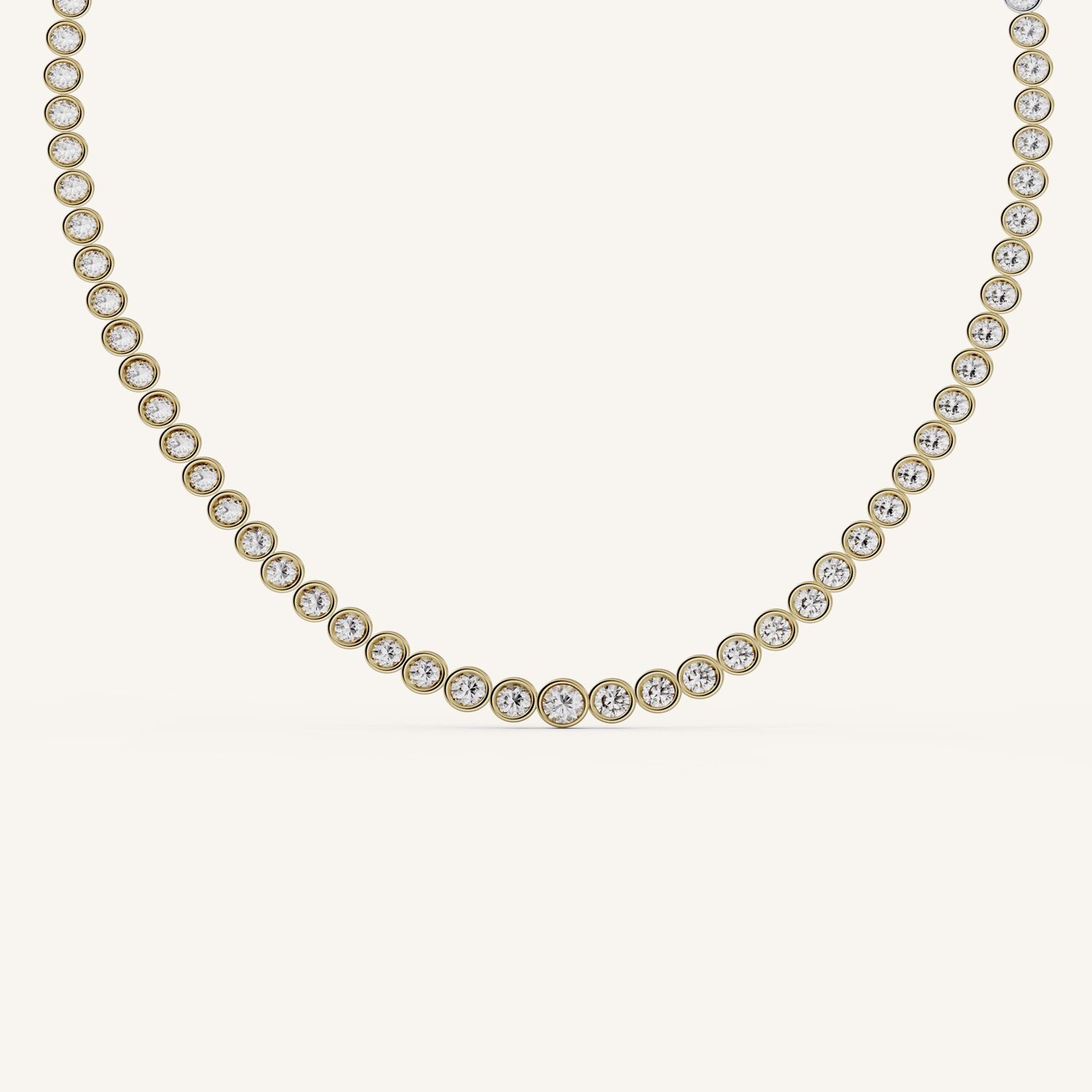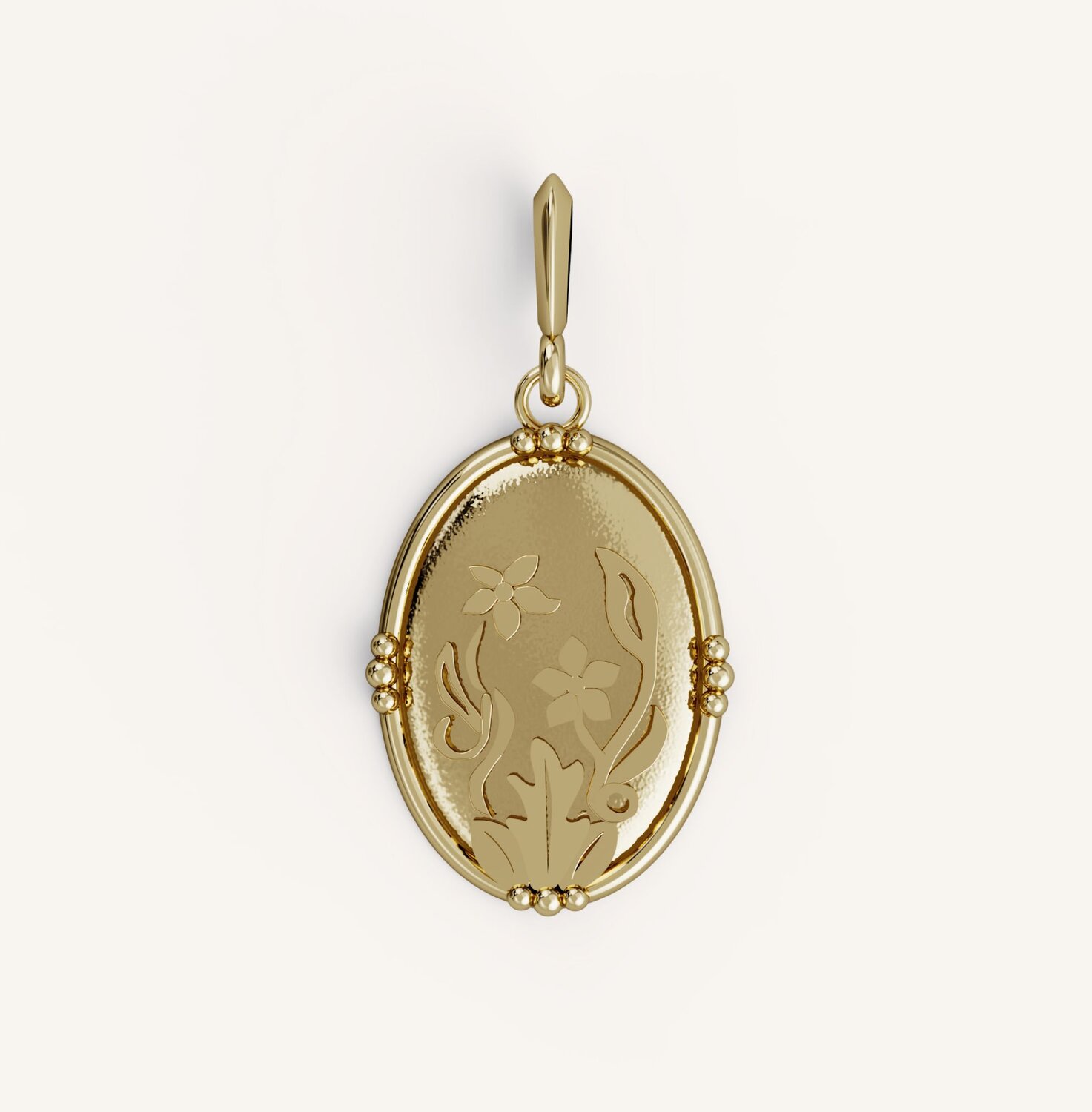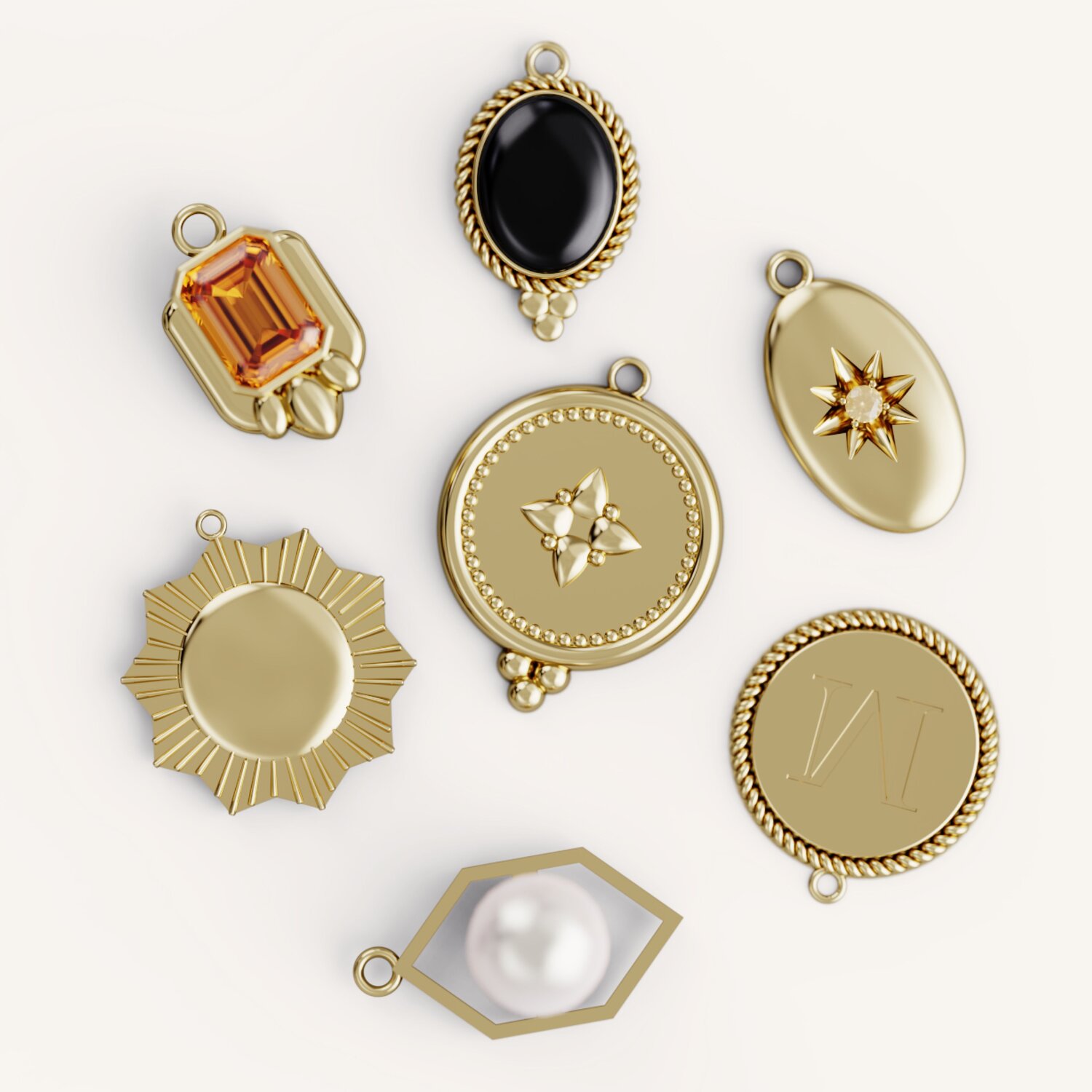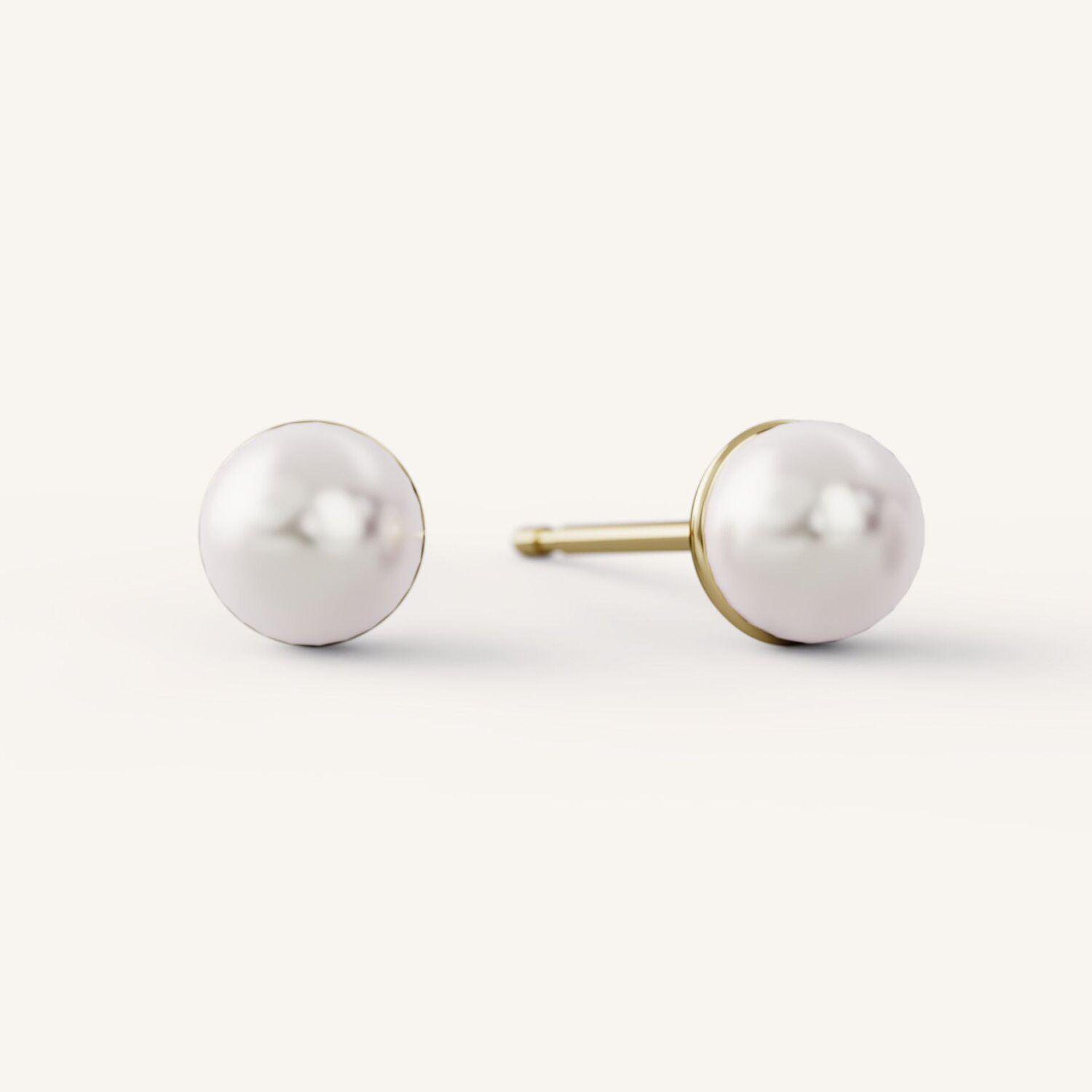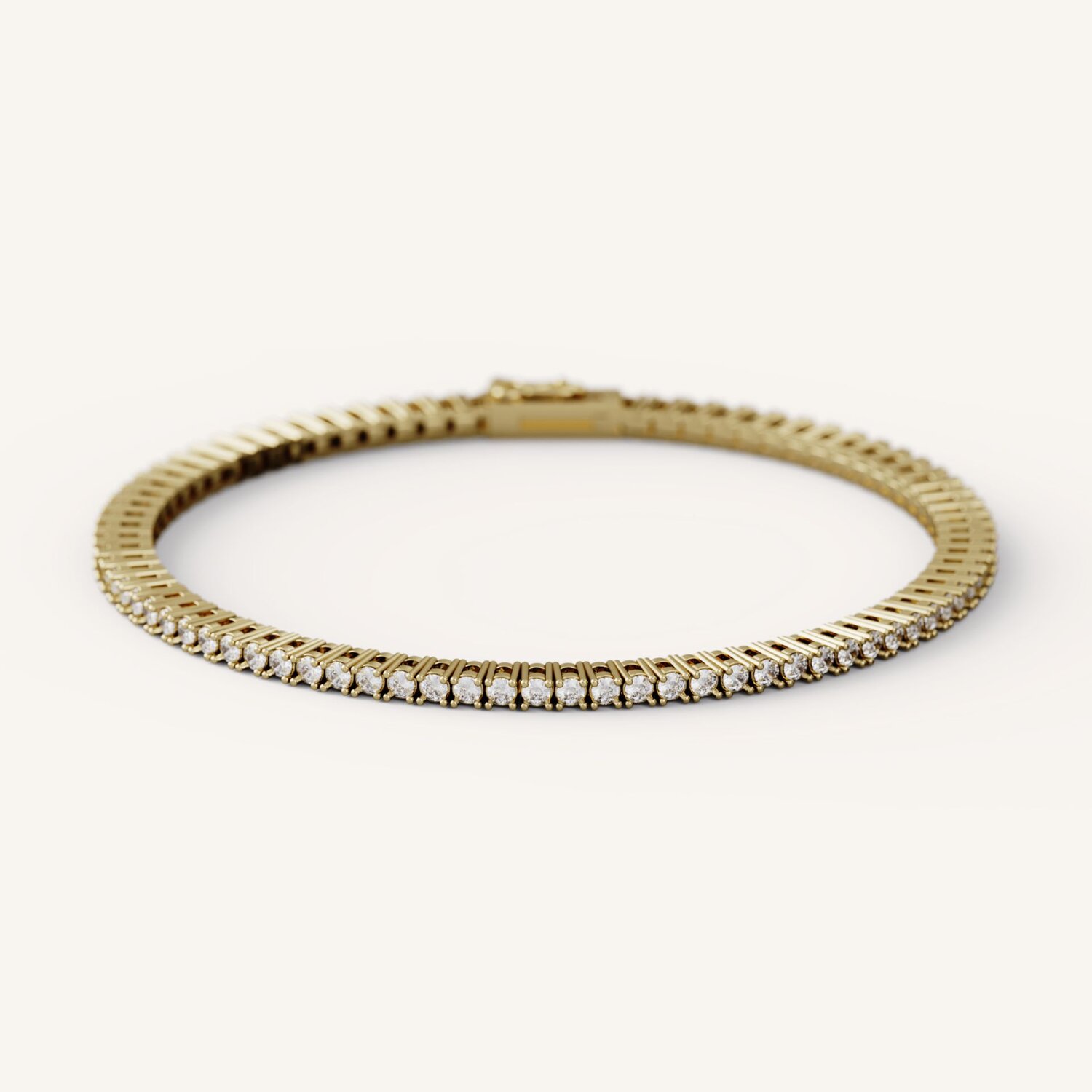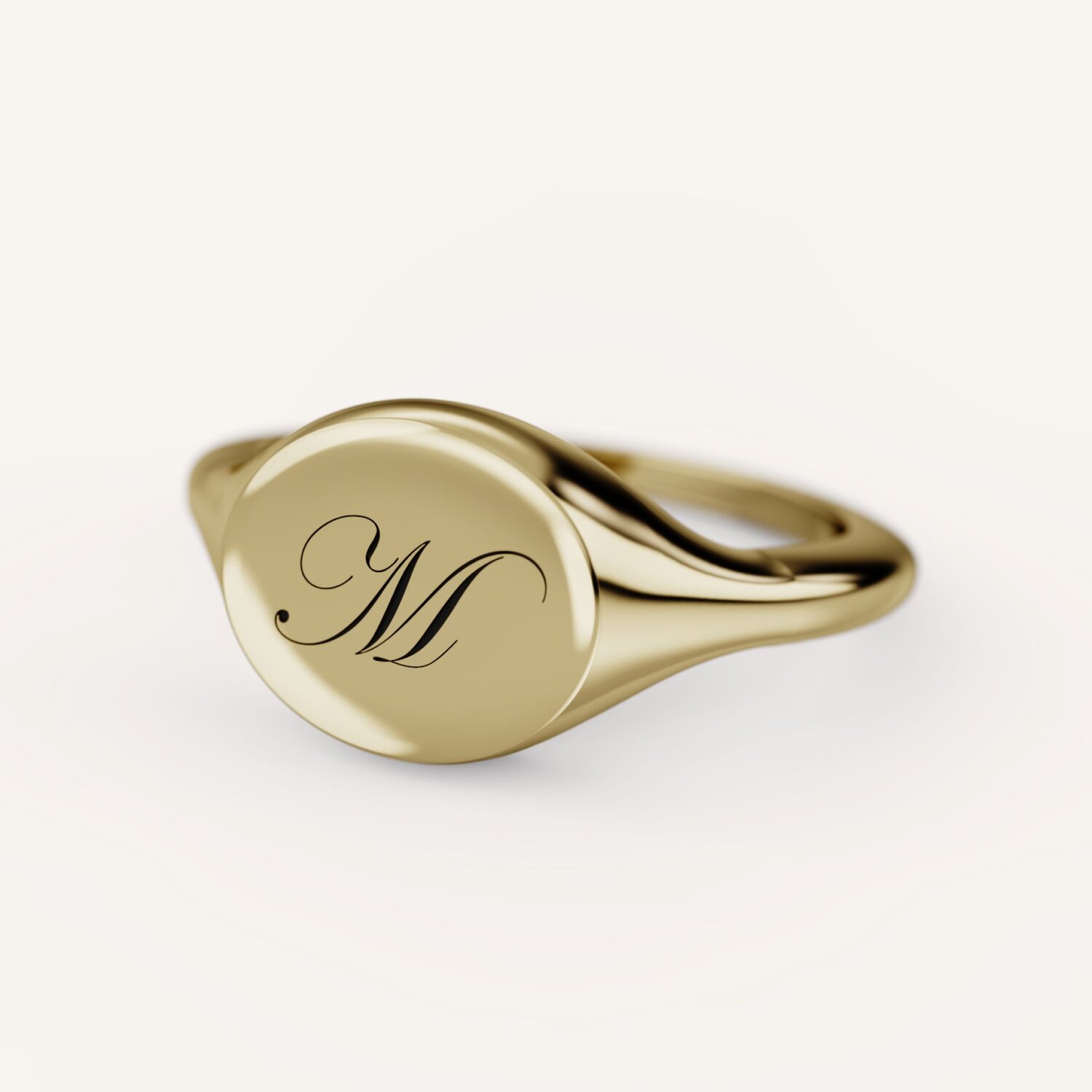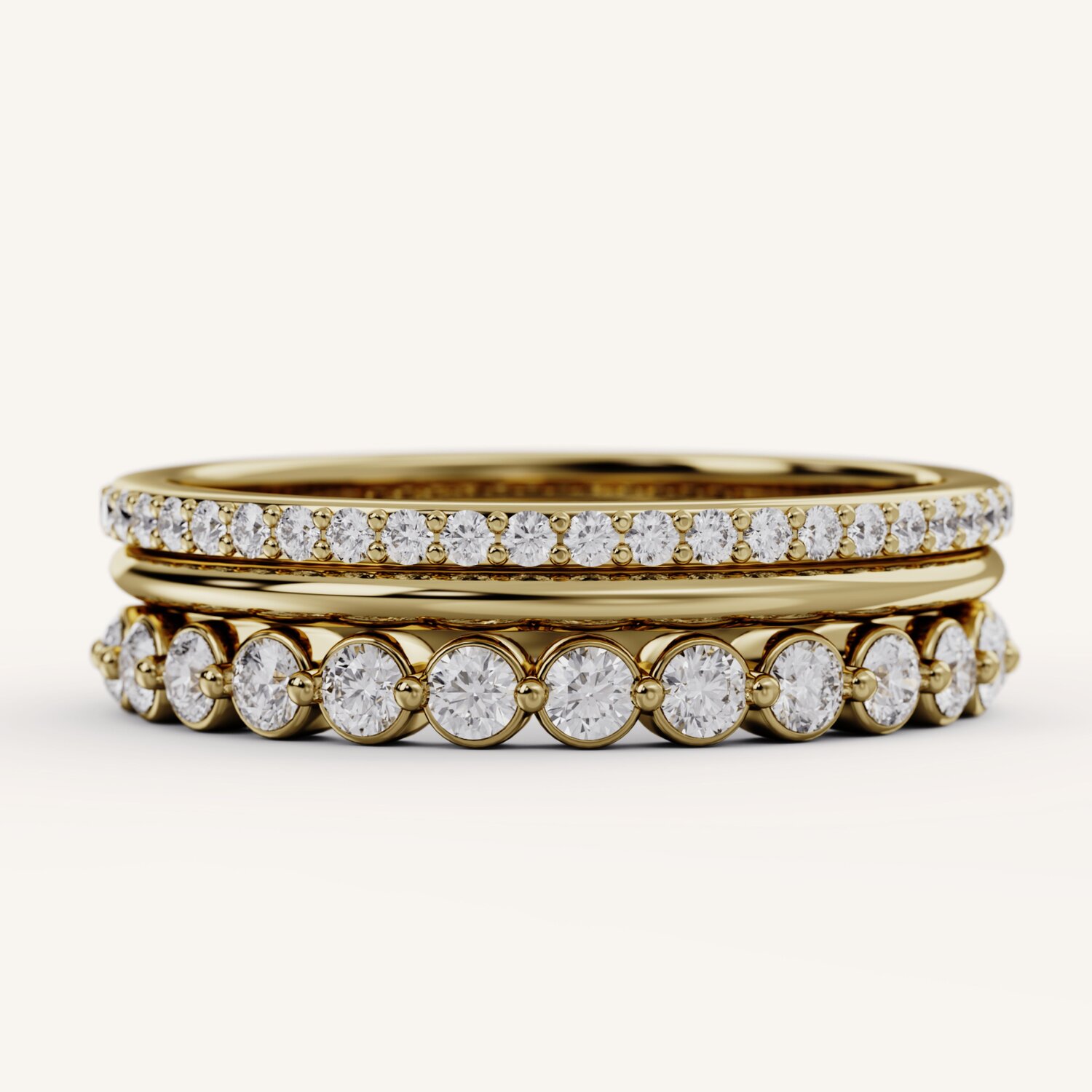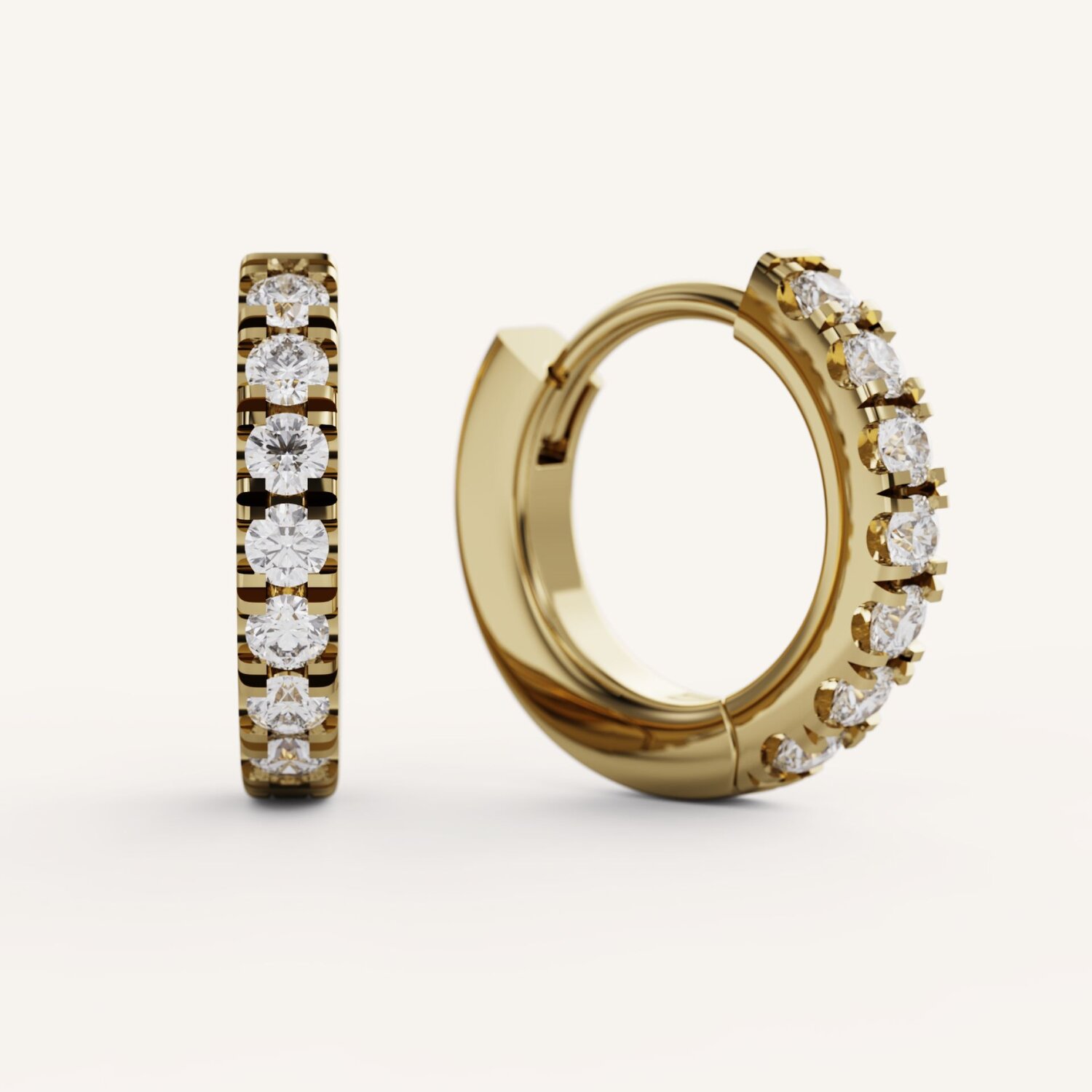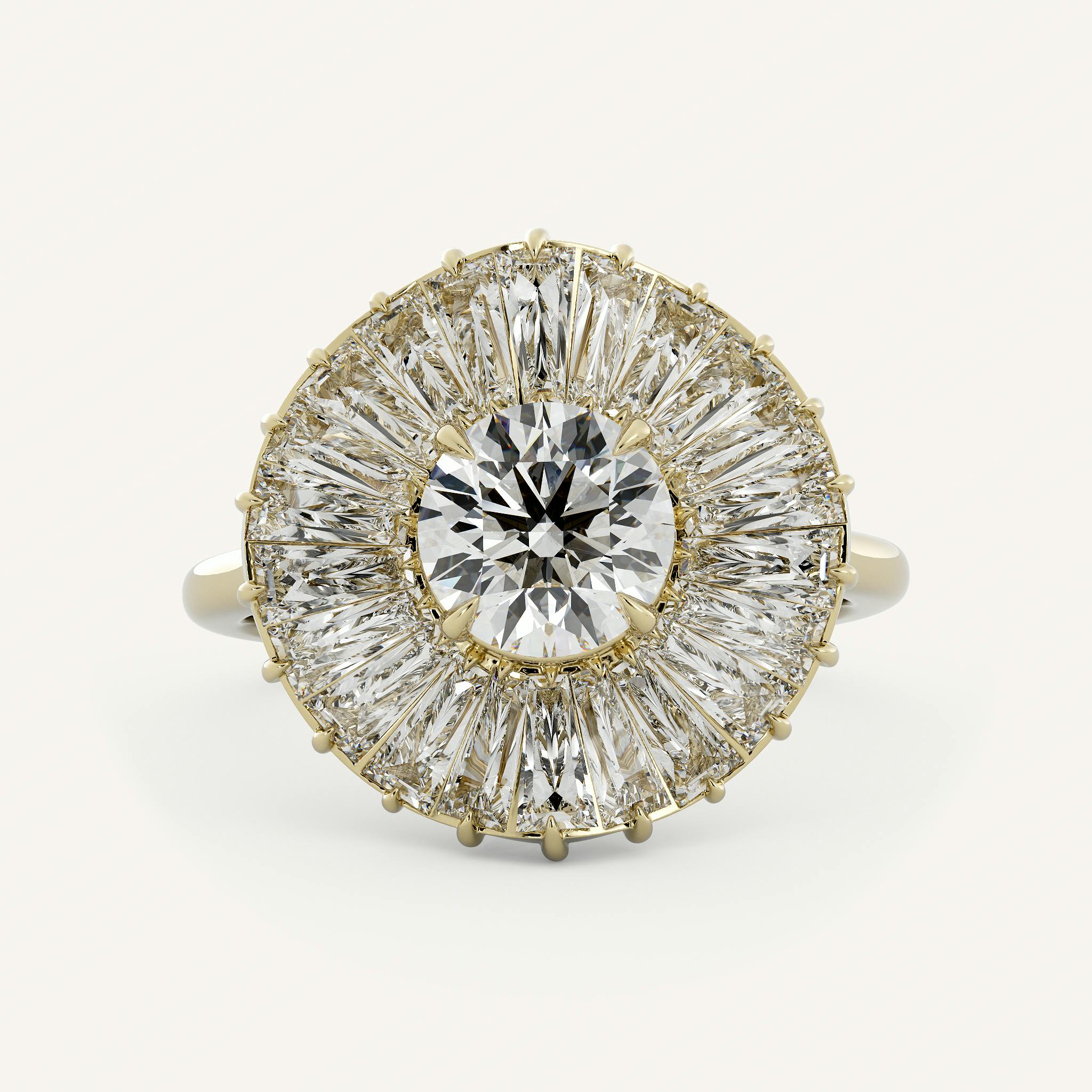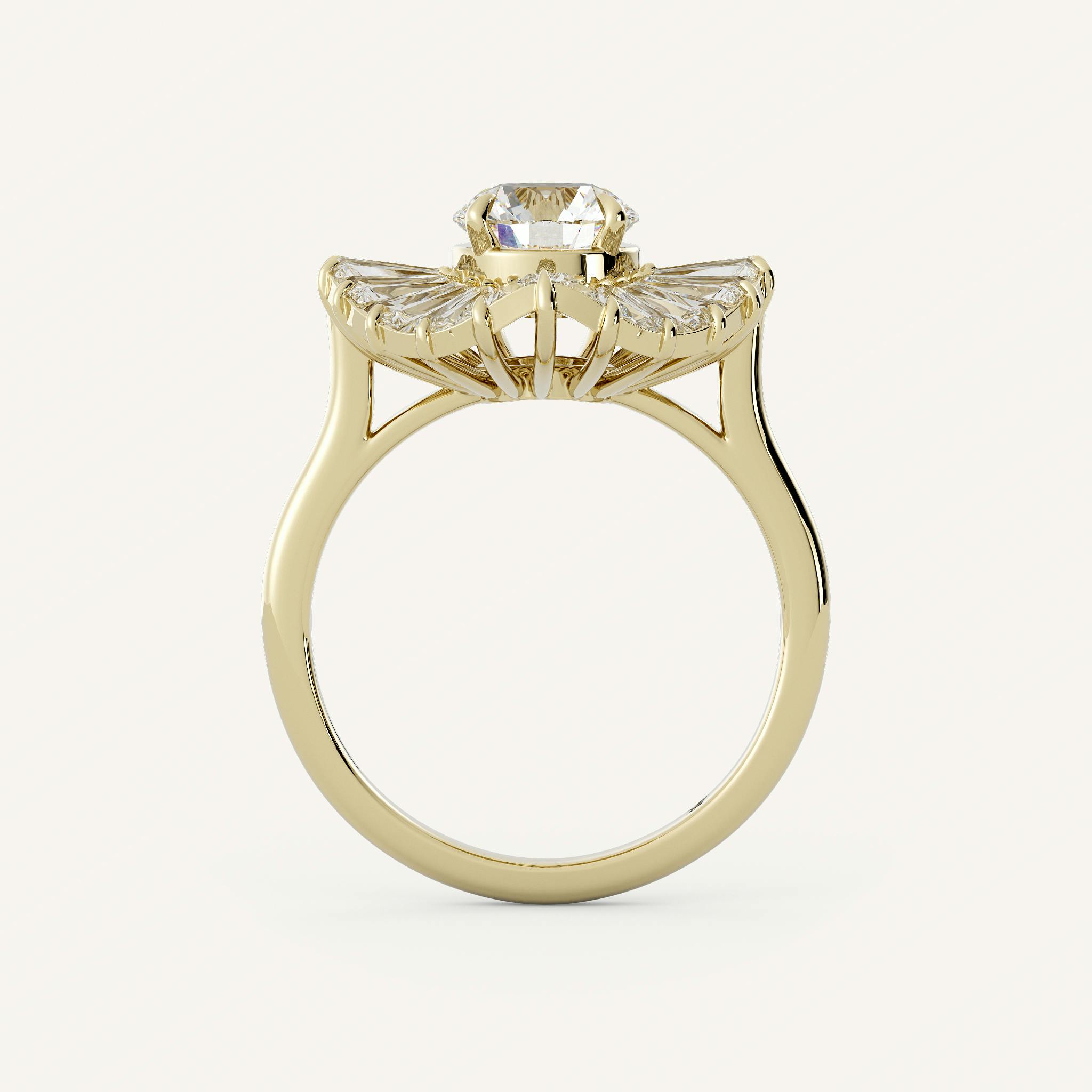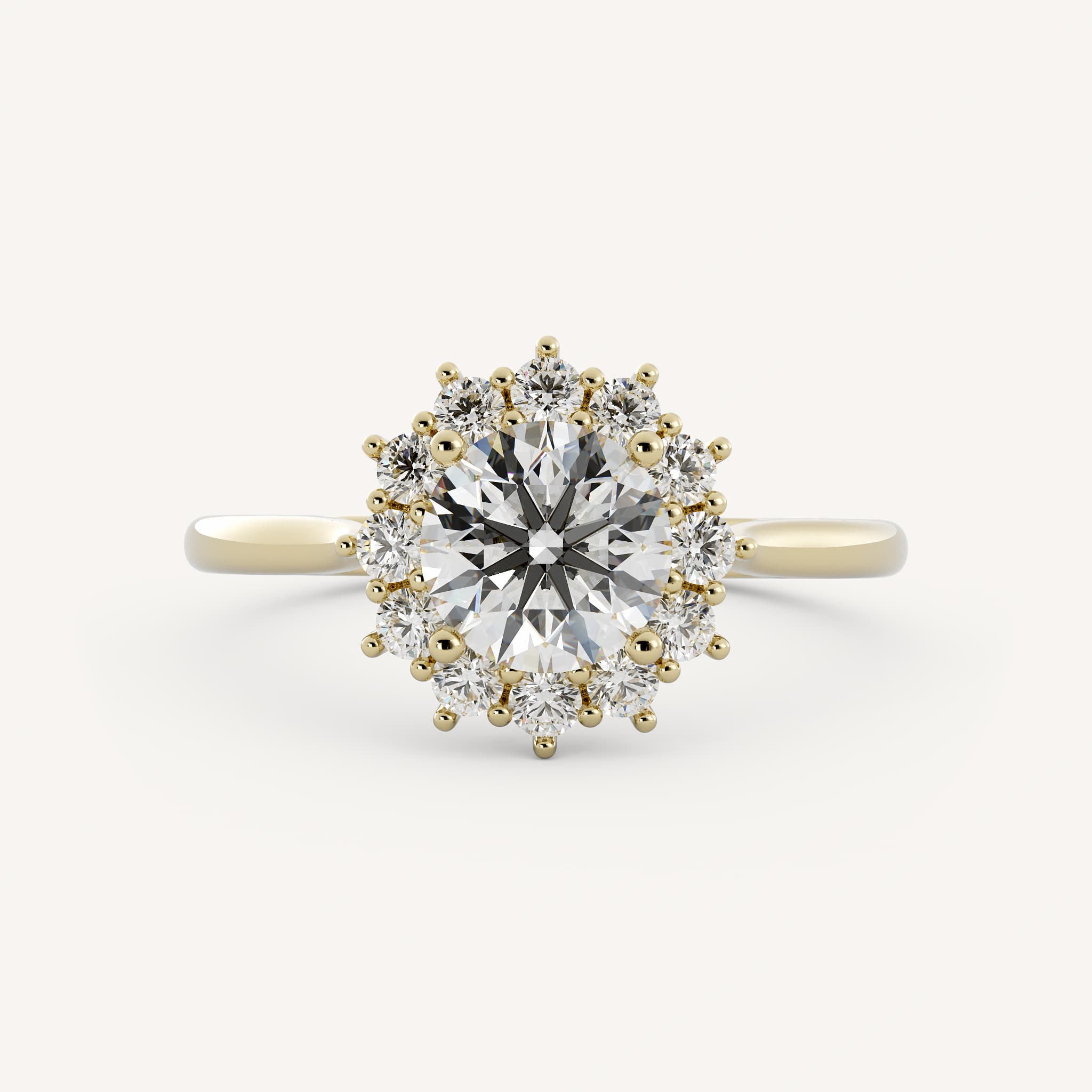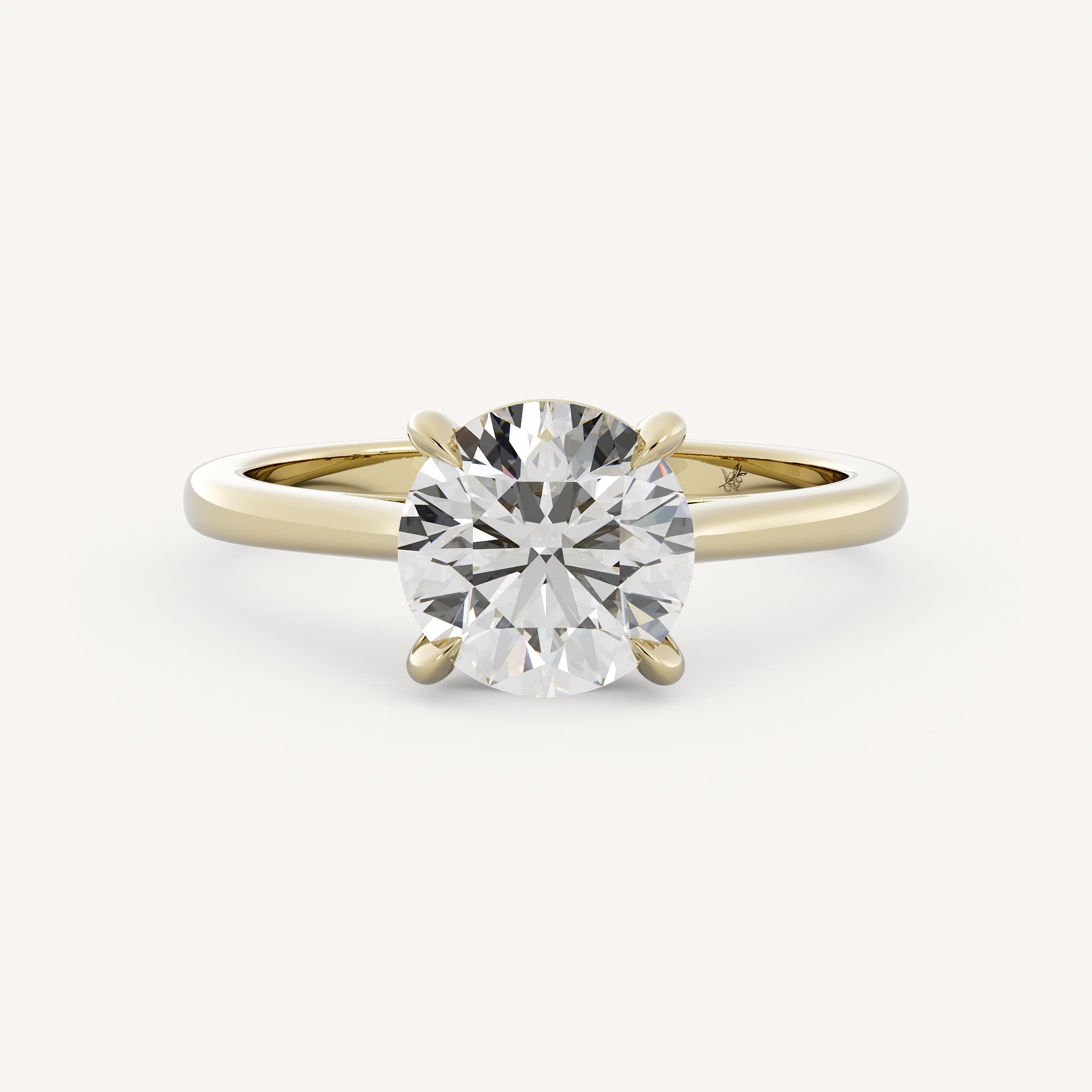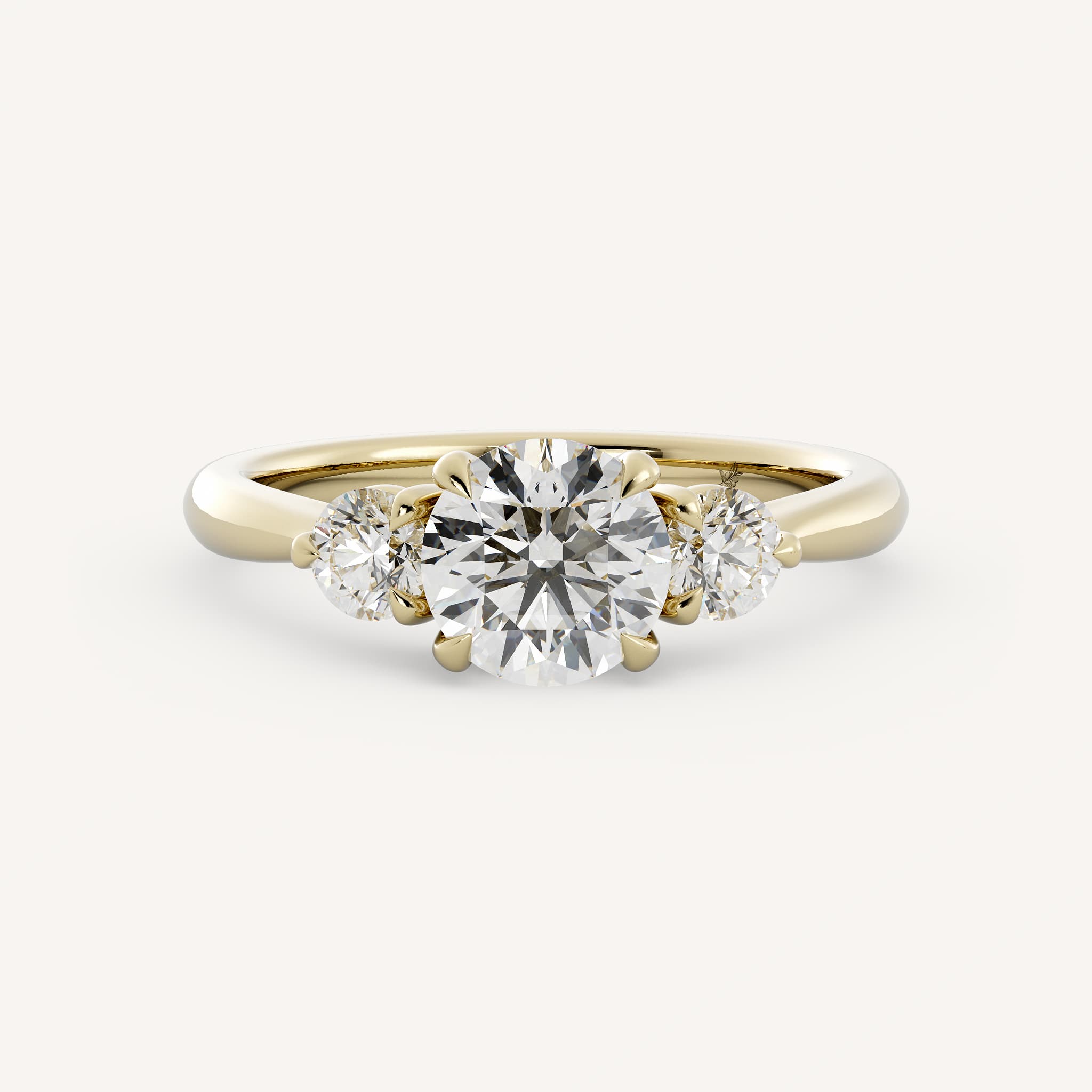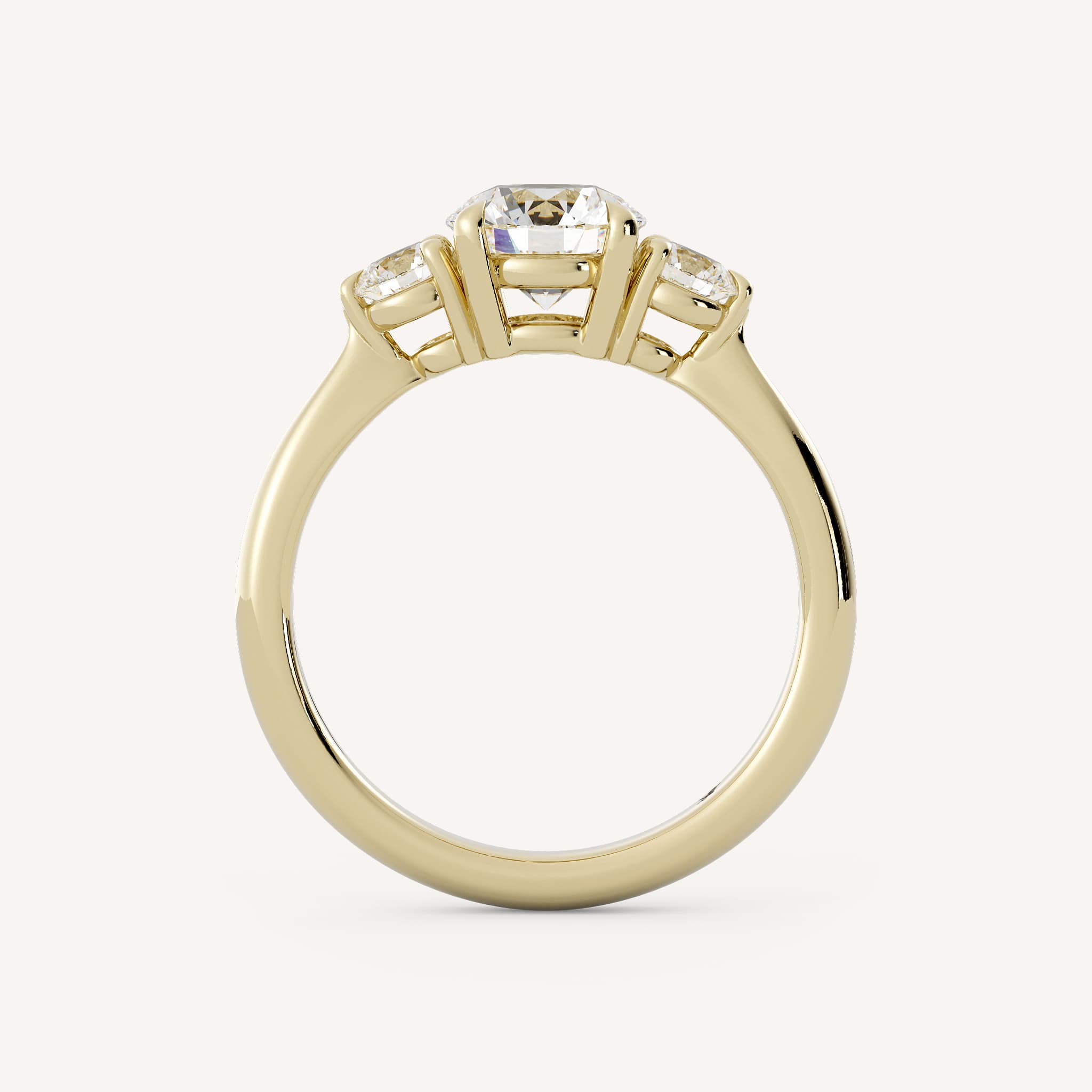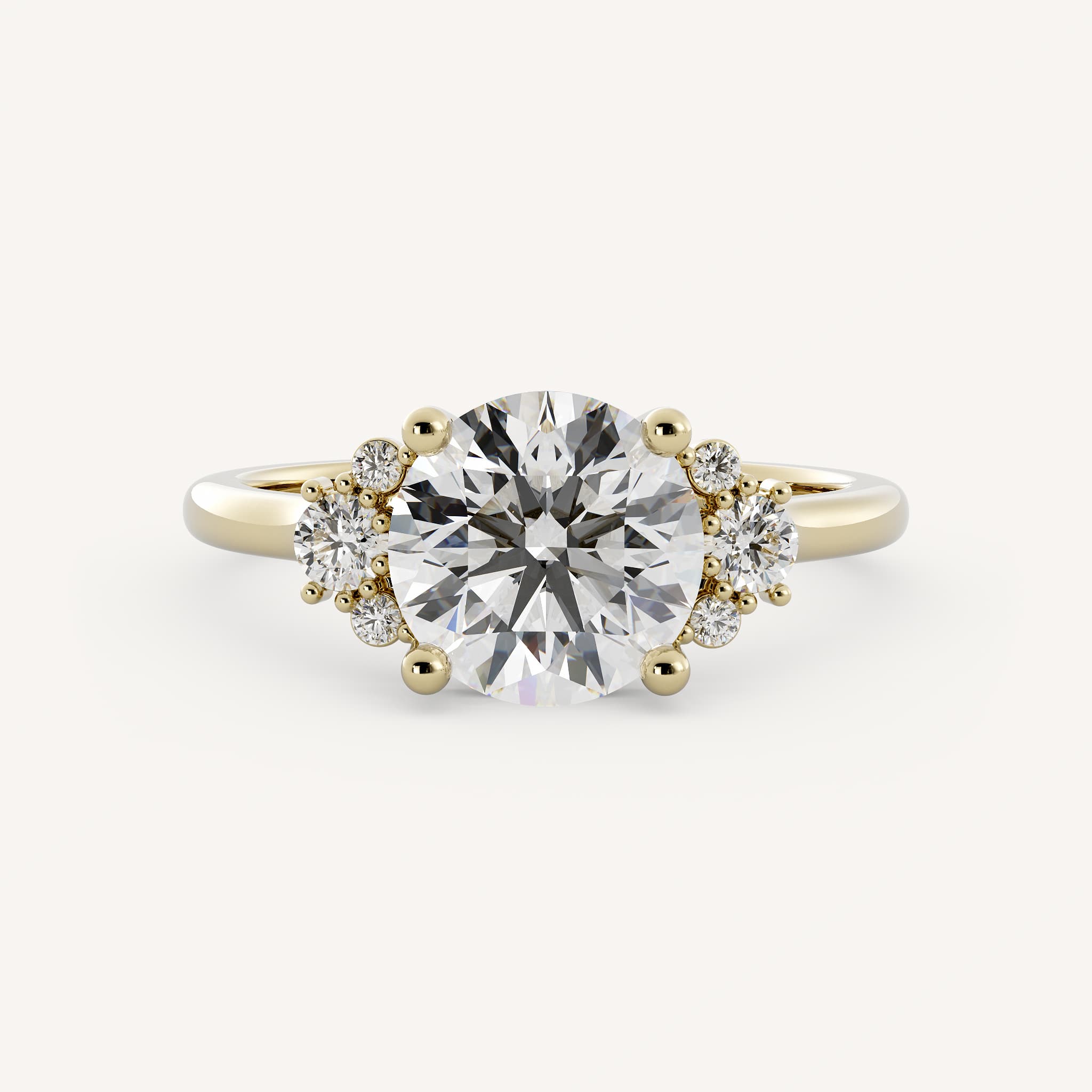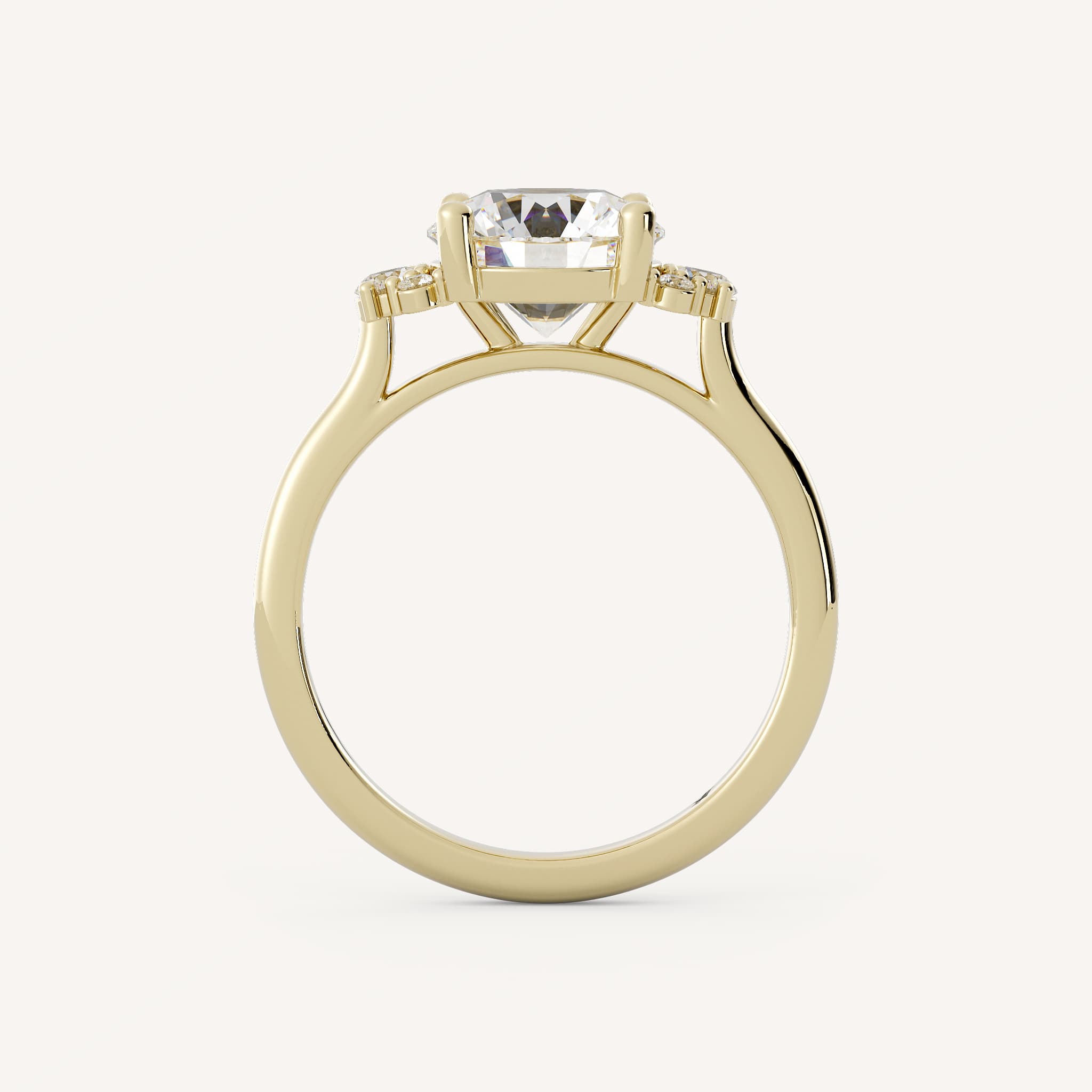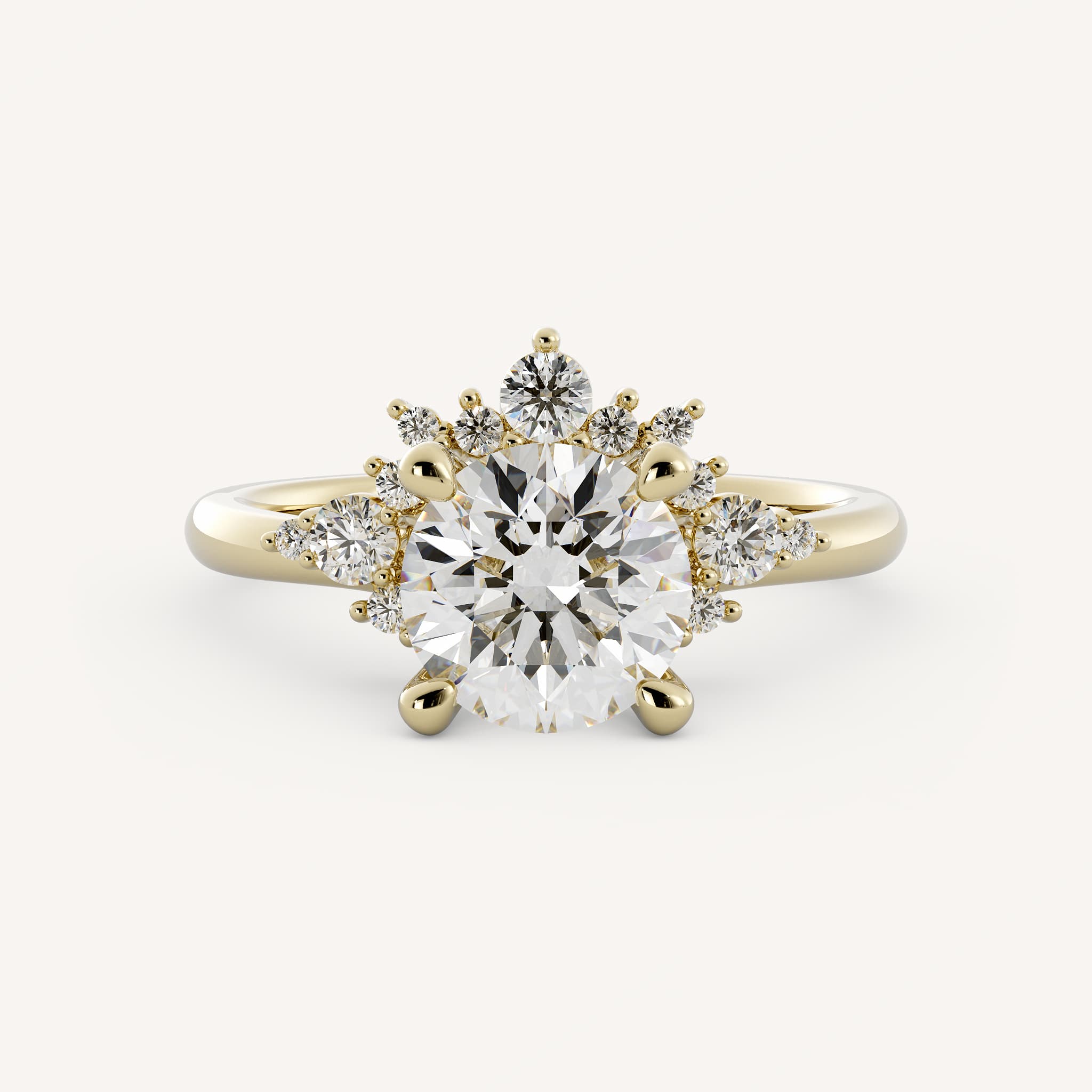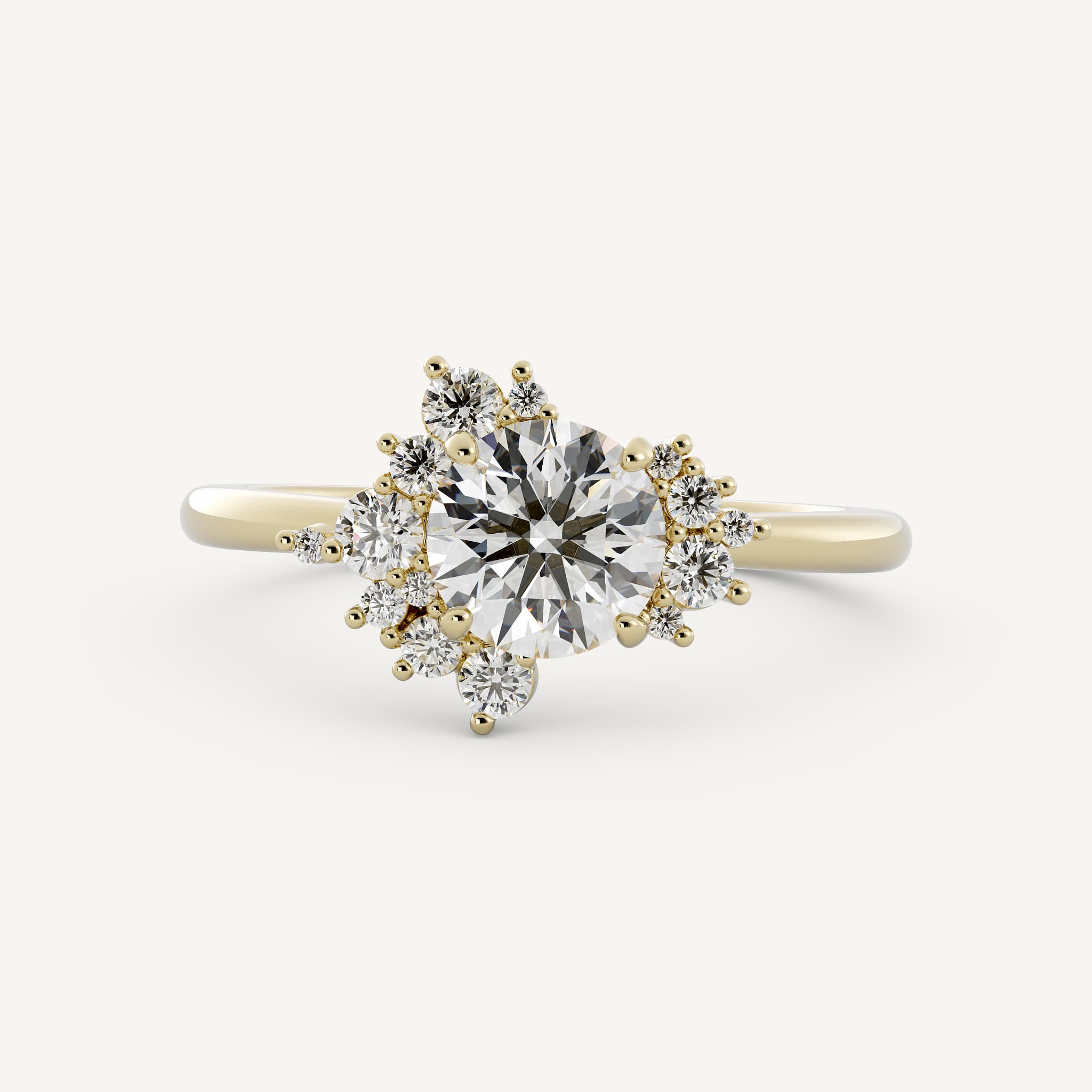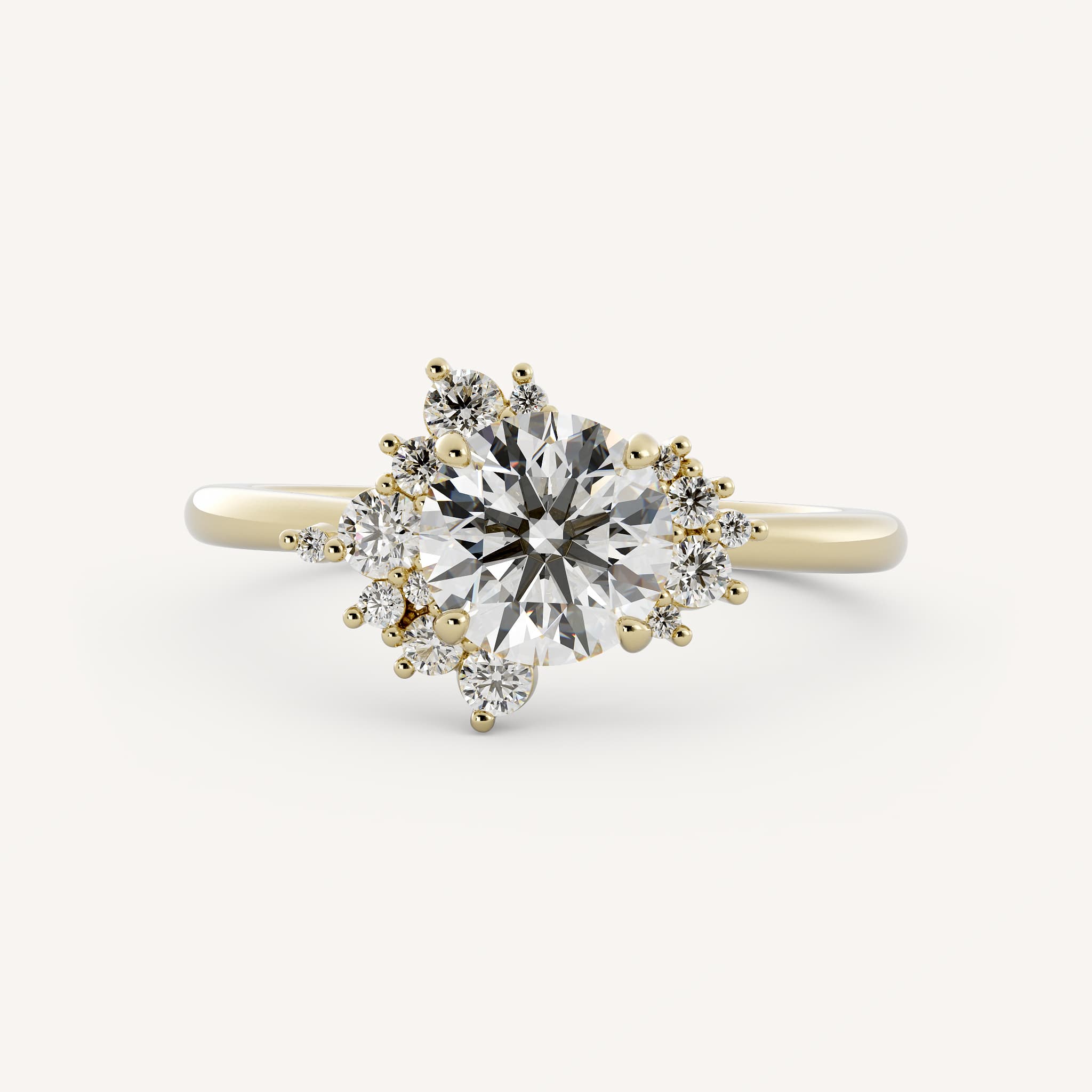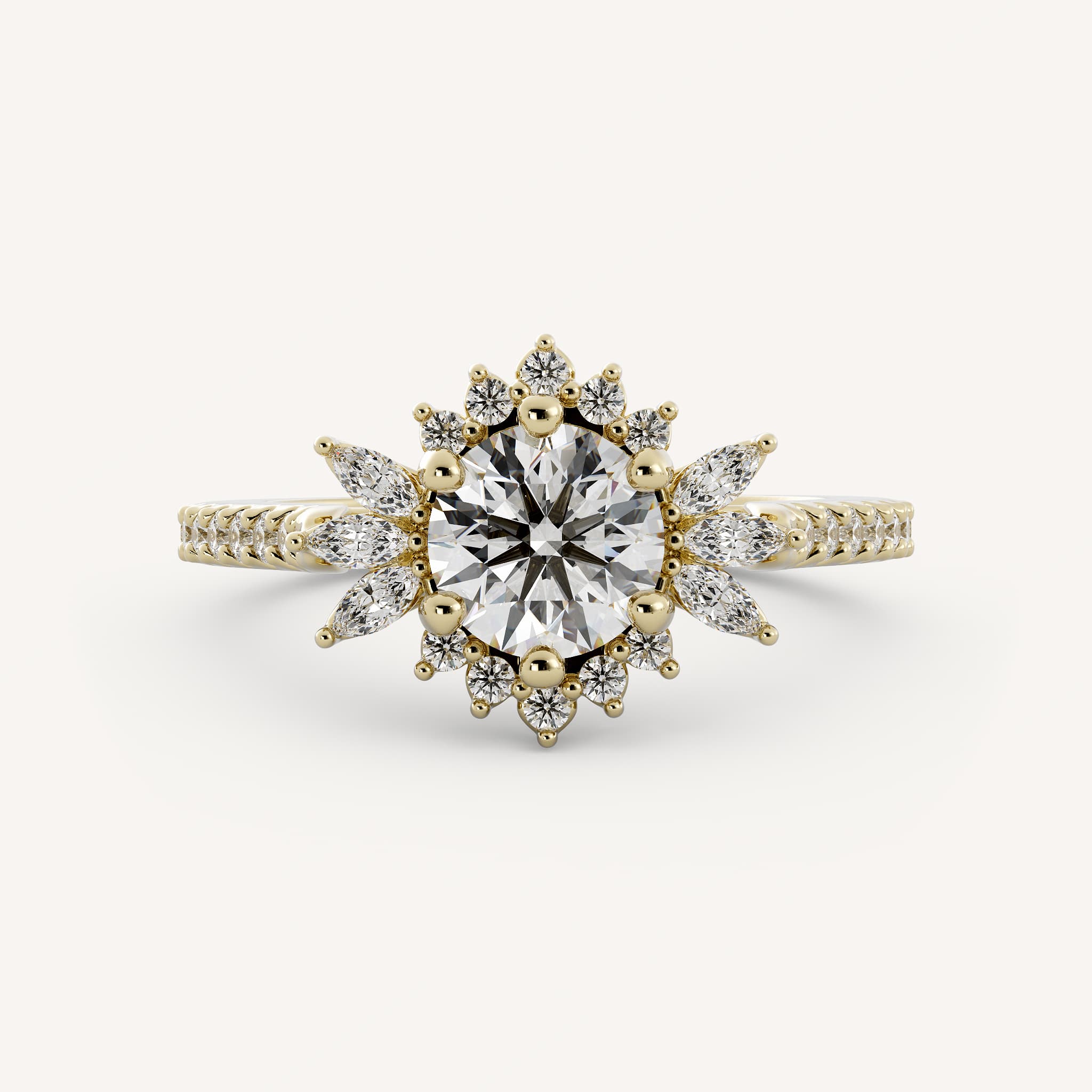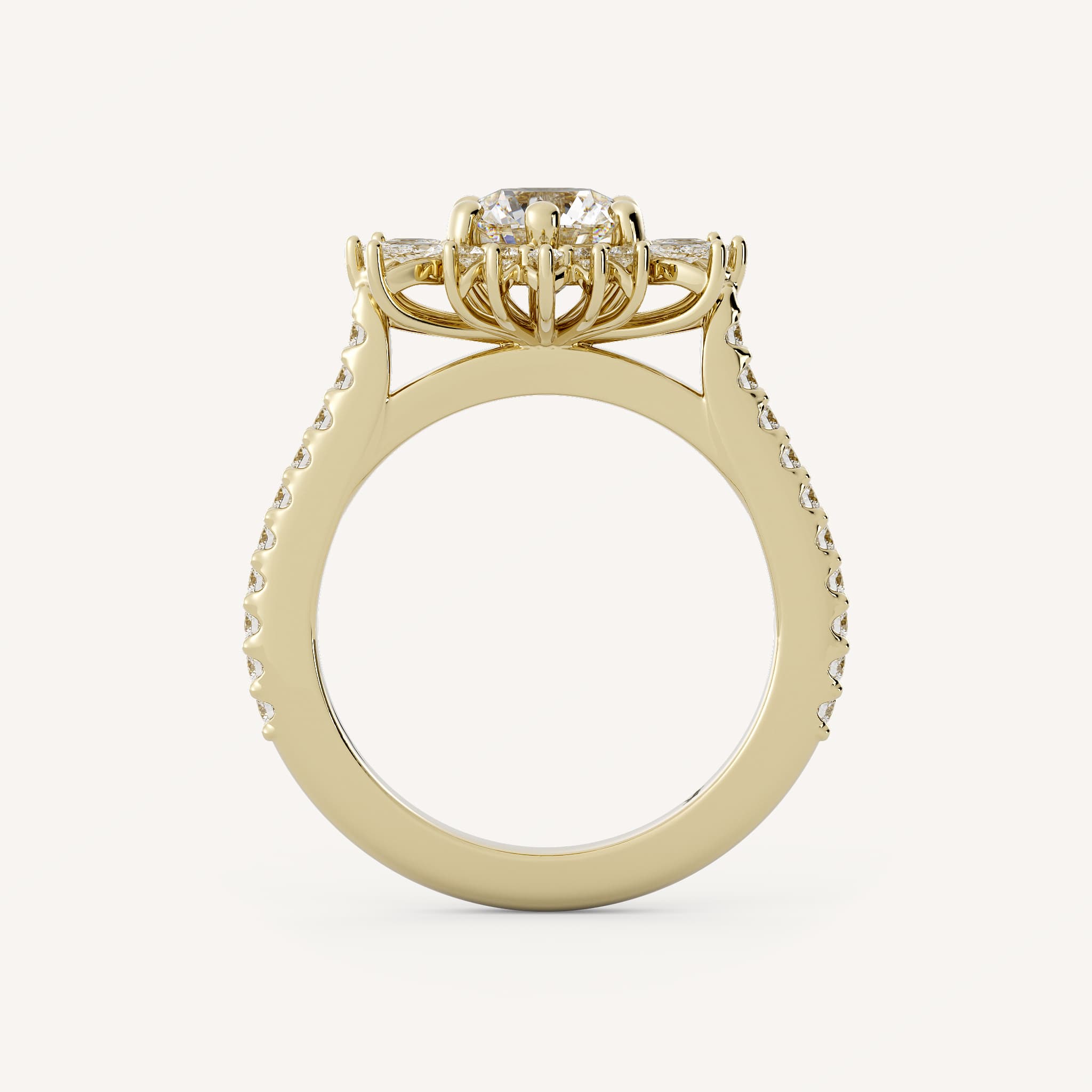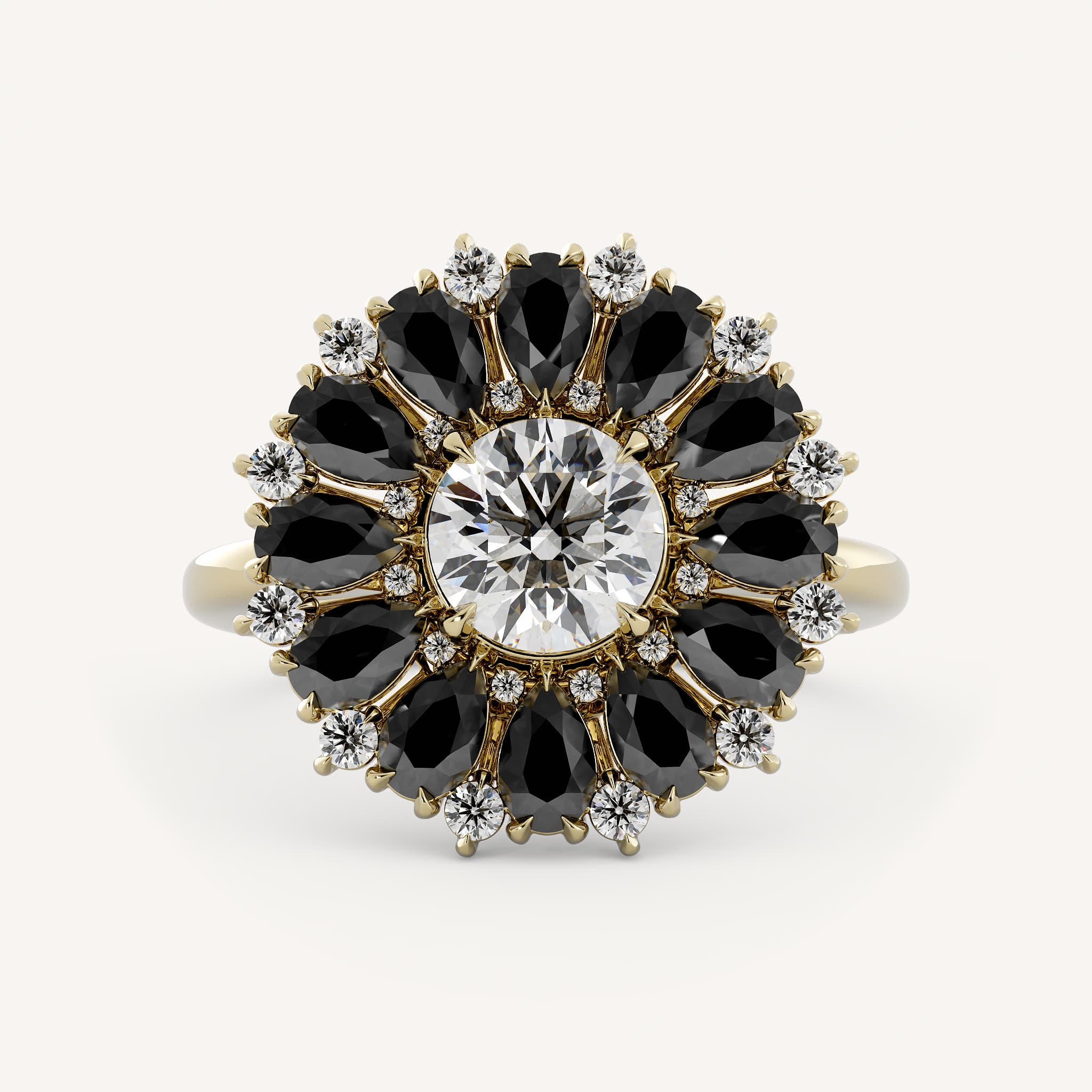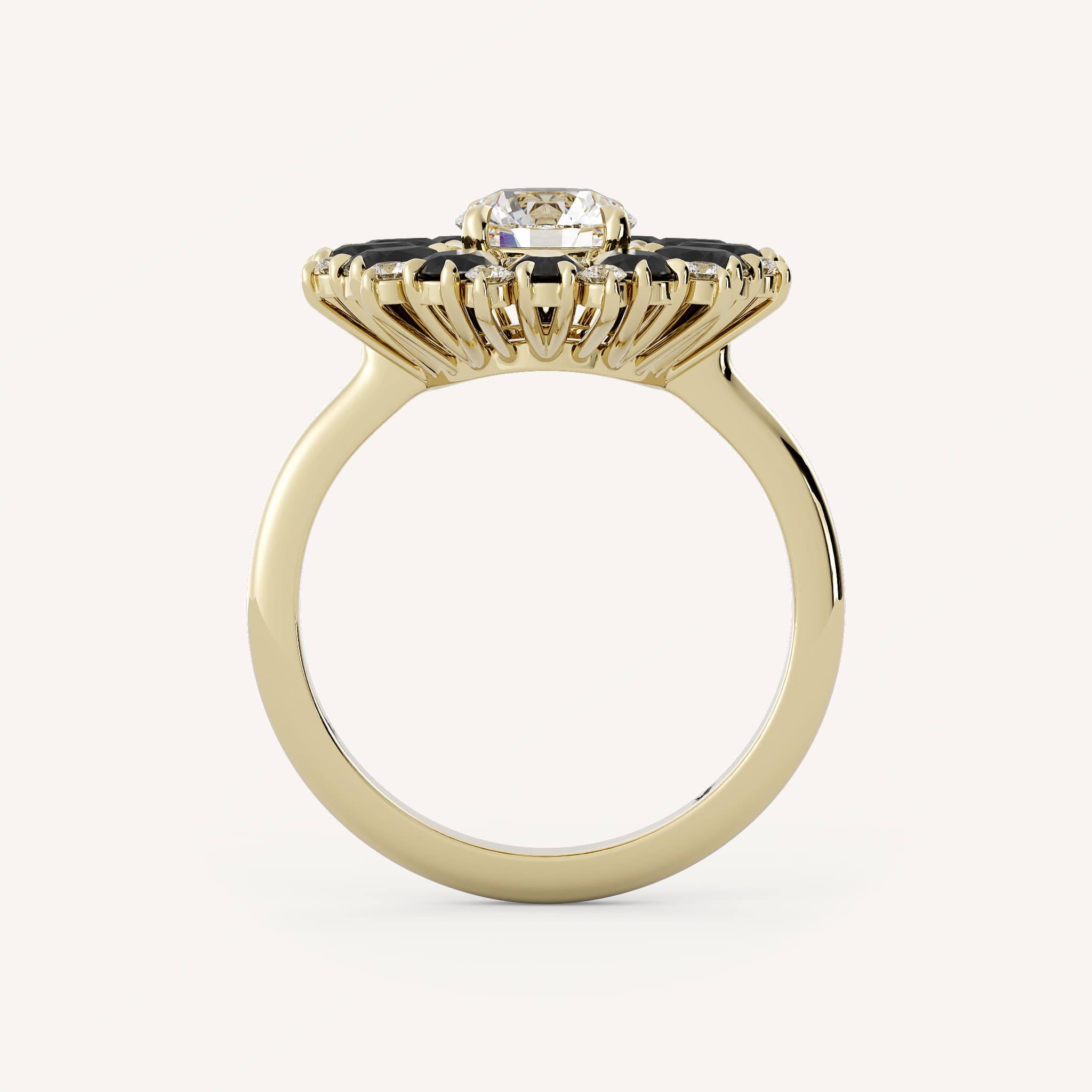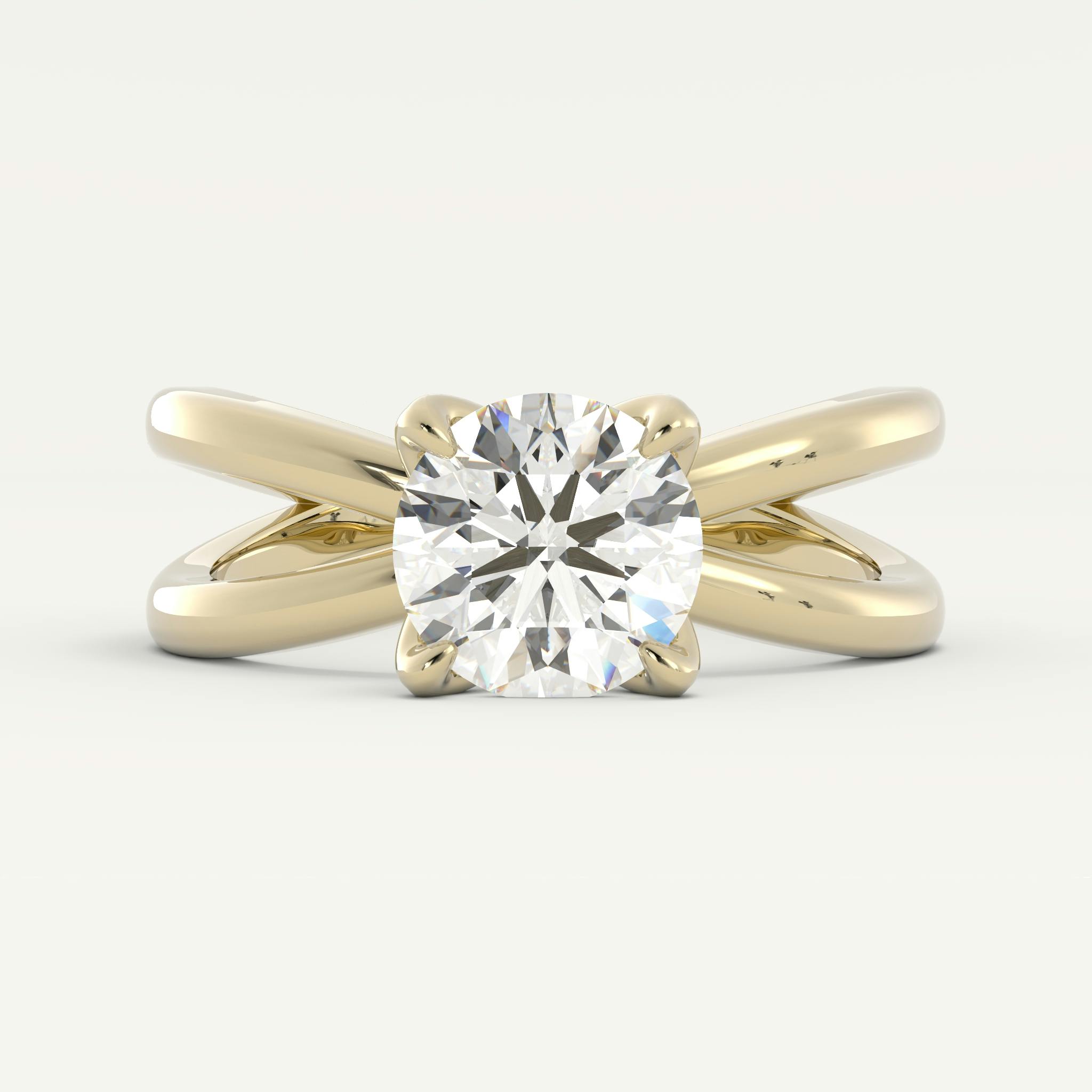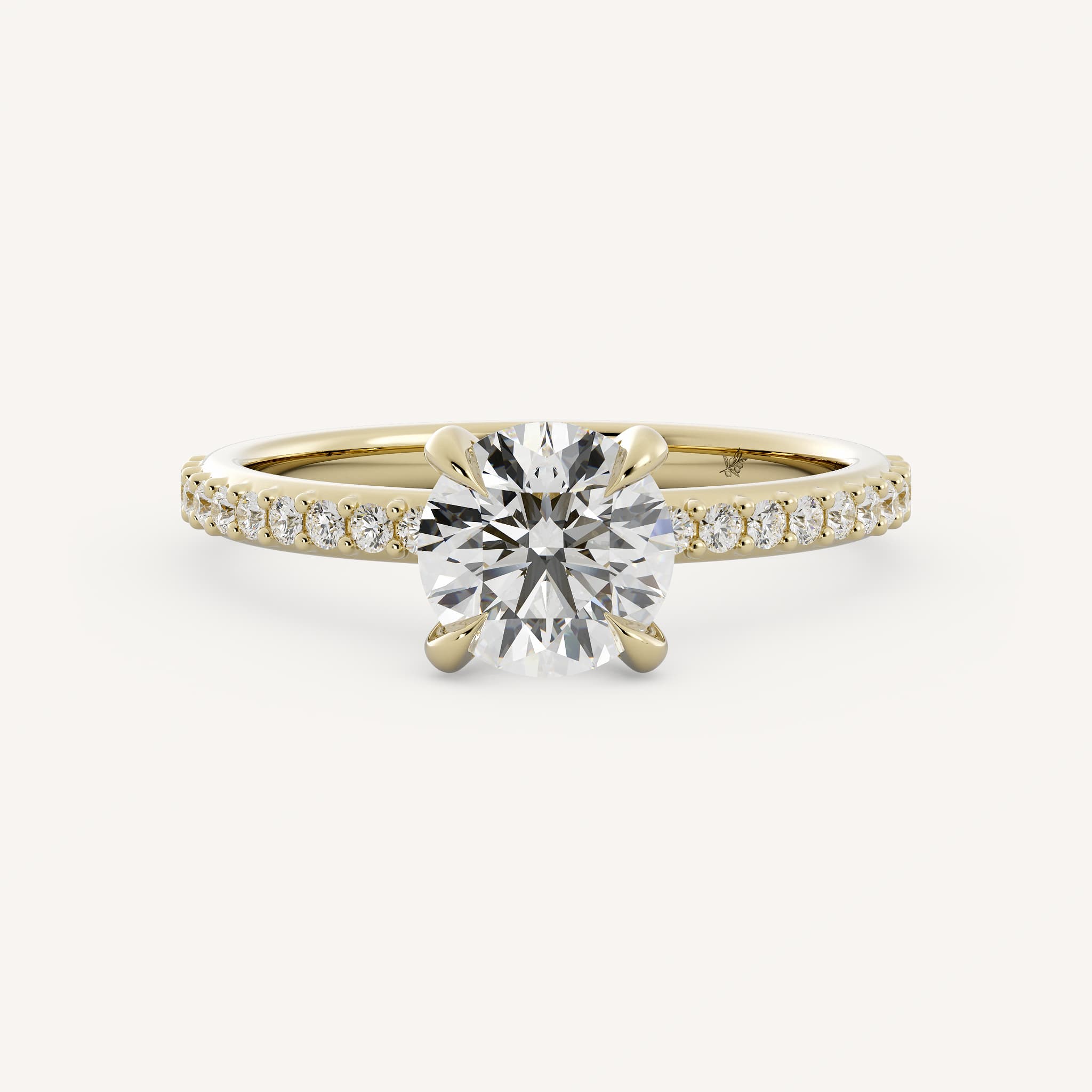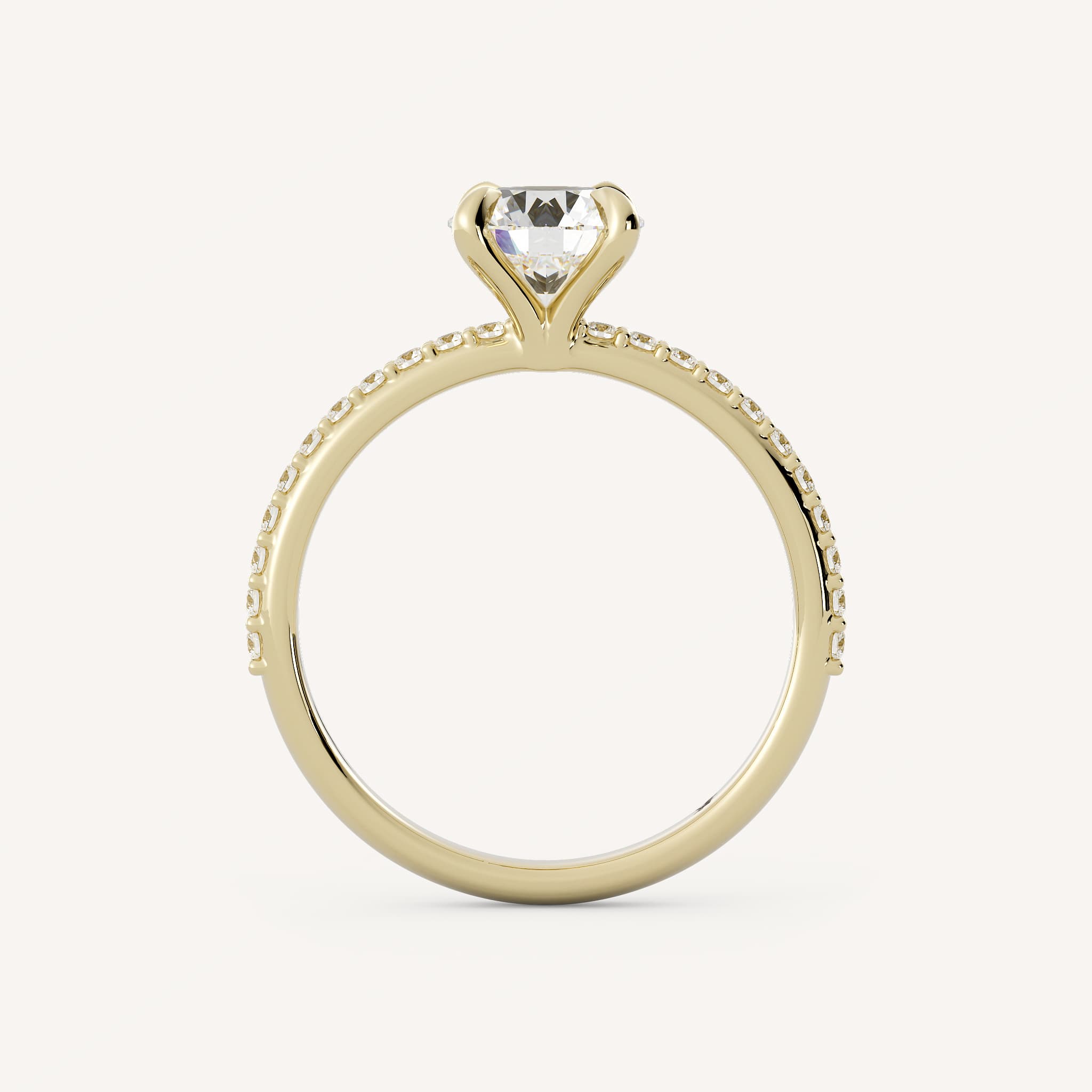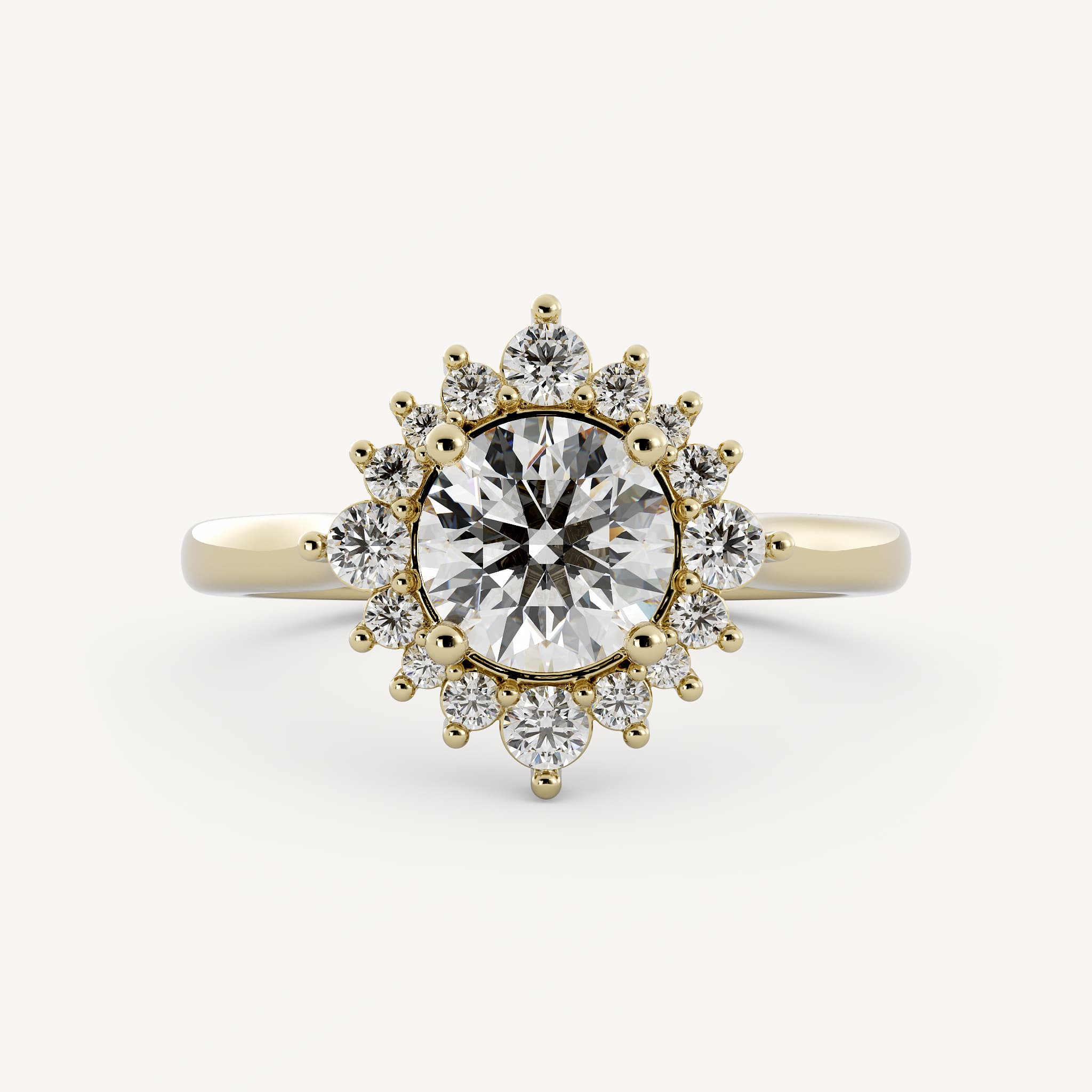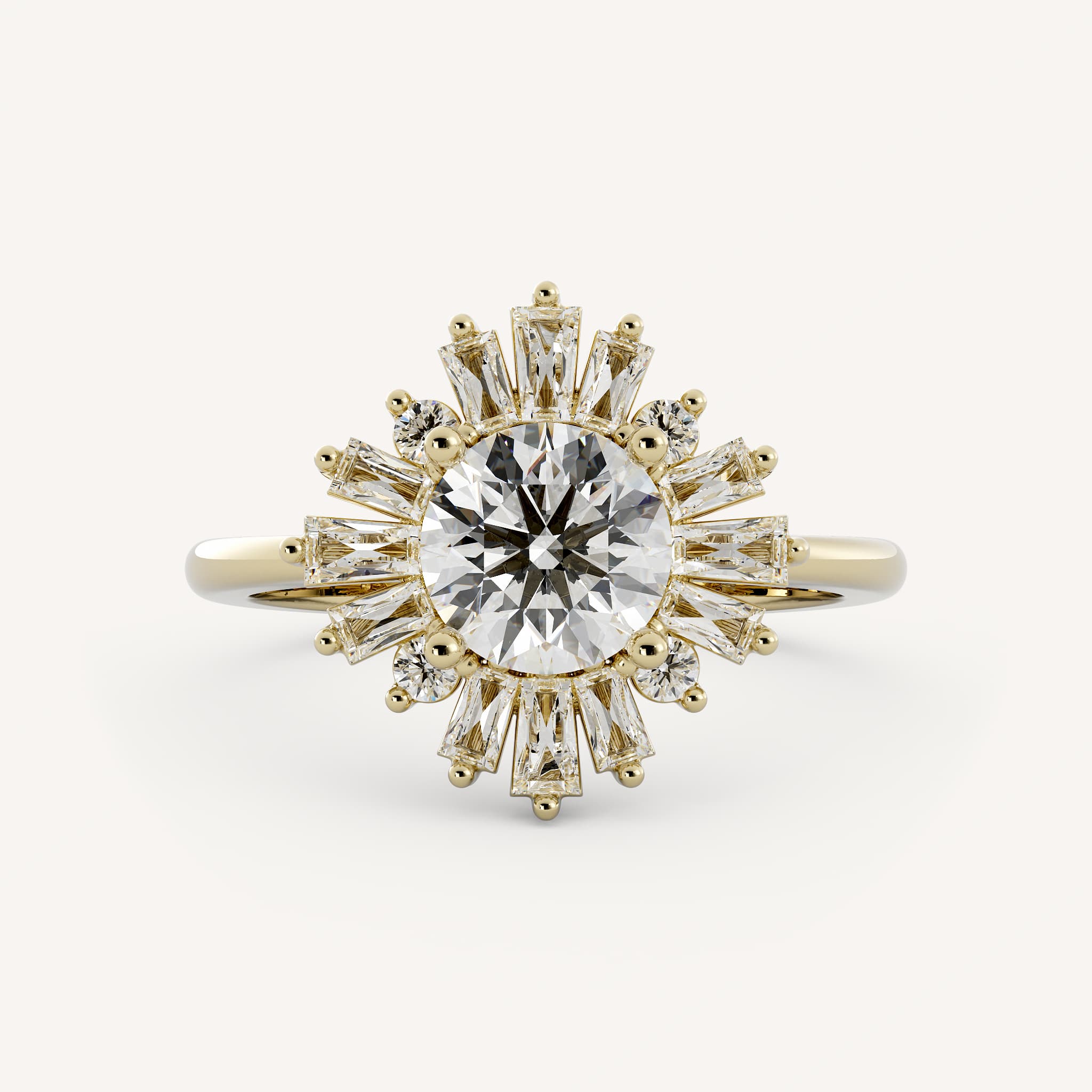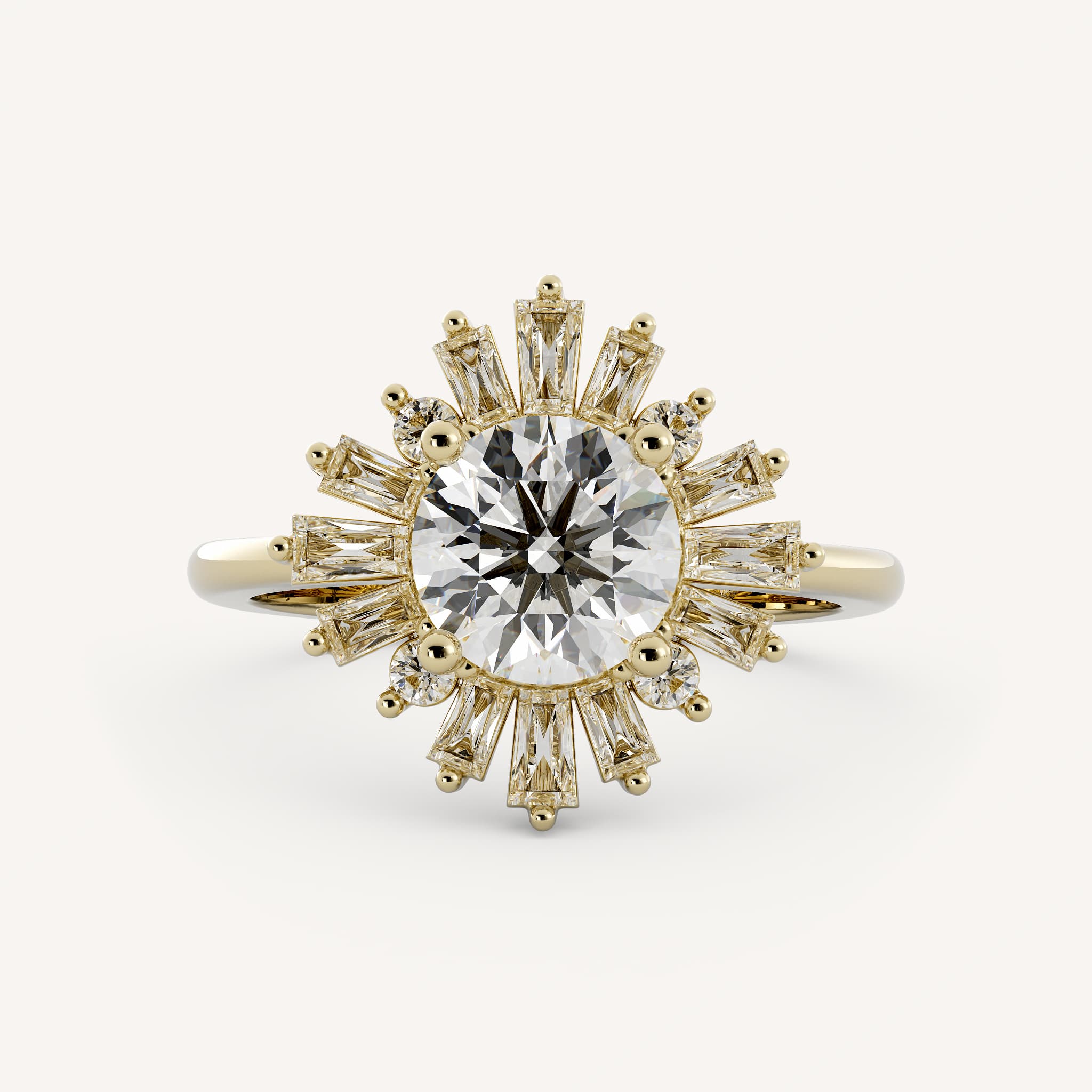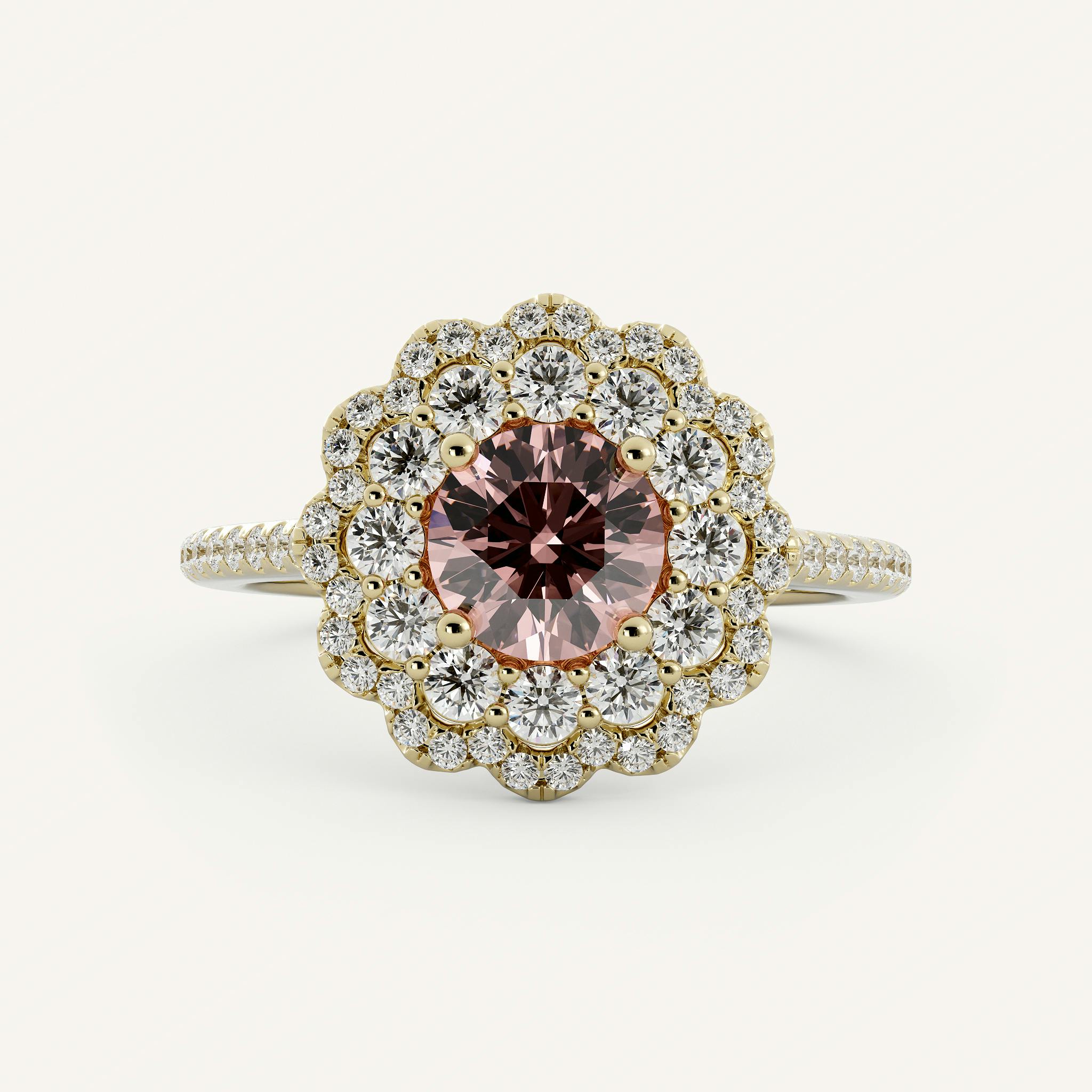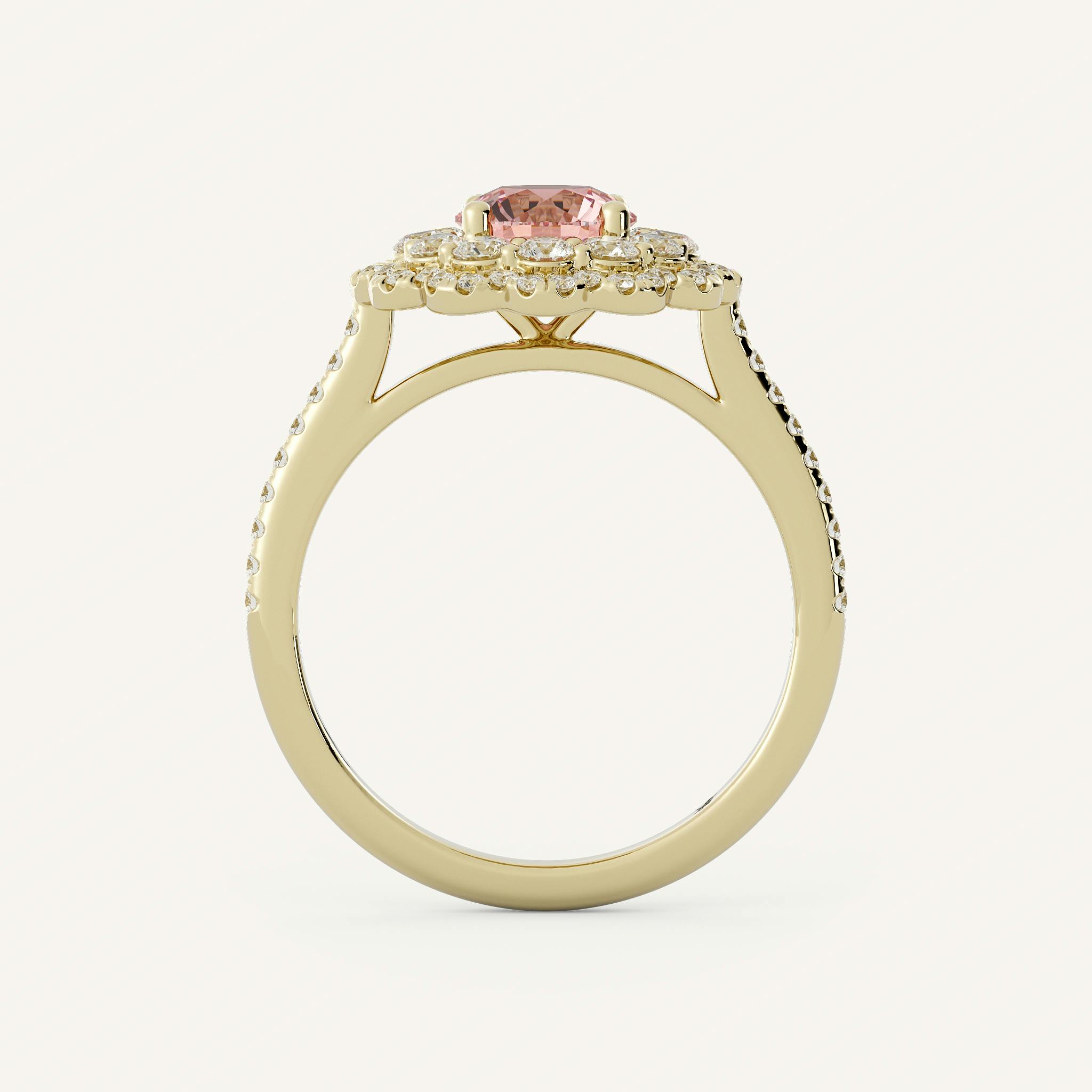Round Diamond Education
A Guide To Round Cuts
history
The round cut for diamonds was first developed in the 17th century, but greatly increased in popularity by 1919. Over the past 100 years, jewelers have perfected the proportions of a round stone to maximize brilliance, creating the modern round brilliant cut.
Of all the shapes, round is the most brilliant and the best choice for the most sparkle! This is probably the reason round is the most popular shape of diamond and makes up more than 70% of the world's diamond inventory and sales. The round cut creates a very balanced look that looks good on all finger lengths and sizes.
What qualities should I look for in a round diamond?
As with any diamond shape, one should consider how the clarity and color affect the beauty of the diamond overall. If an inclusion is not seen with the naked eye or is in a less noticeable position, it should not distract from the overall brilliance. A whiter color (D-H on the color grading scale) is usually desired but some people prefer warmer, yellow tones (I-K color).
The cut is the most important factor in a diamond’s brilliance but is often overlooked by consumers. The cut determines how the light reflects and refracts throughout the diamond producing the famed brilliance of the round brilliant. An ideally cut diamond has the proportions that will produce the most sparkle.
How should I wear my round diamond?
It’s hard to go wrong with a round cut. Round brilliants look stunning in most setting styles. Round solitaires are a popular and gorgeous choice. These settings show off the center stone without any distracting features. Other round settings have beautiful halos or accent stones that complement the beauty of the center stone and add to the overall brilliance of the fine jewelry piece.
celebrities with round cuts
- Brittany Snow
- Mila Kunis
- Emily Blunt
- Natalie Portman


